Boat Navigation Lights Rules: Illustrated Beginners Guide
When navigating at night, the lights on other boats are your first clue about the moving dangers around you. And your navigation lights are your first line of safety in avoiding collisions in the dark, and they tell others vessels what you are and what you are doing. The rules sound complex, but with a little understanding you can get the basics for any situation.
So what are the basic navigation light rules? For most small vessels, motoring requires red and green (port and starboard) lights, and a white light visible in all directions around the boat. This is almost always a stern light and a masthead light on sailboats. Boats under sail require port and starboard lights, and a white stern light. Sailboats below sixty-five feet may show a tricolor light at the masthead instead of side and stern lights when sailing.
That's it, in a nutshell. There's a little more to it, as the rules change with different sizes and there are some specifics about angles of display for the colors. Identifying other ships at sea requires more study, but the basics are the same. And it's not much trouble to make sure you've always got the proper lights on your vessel.
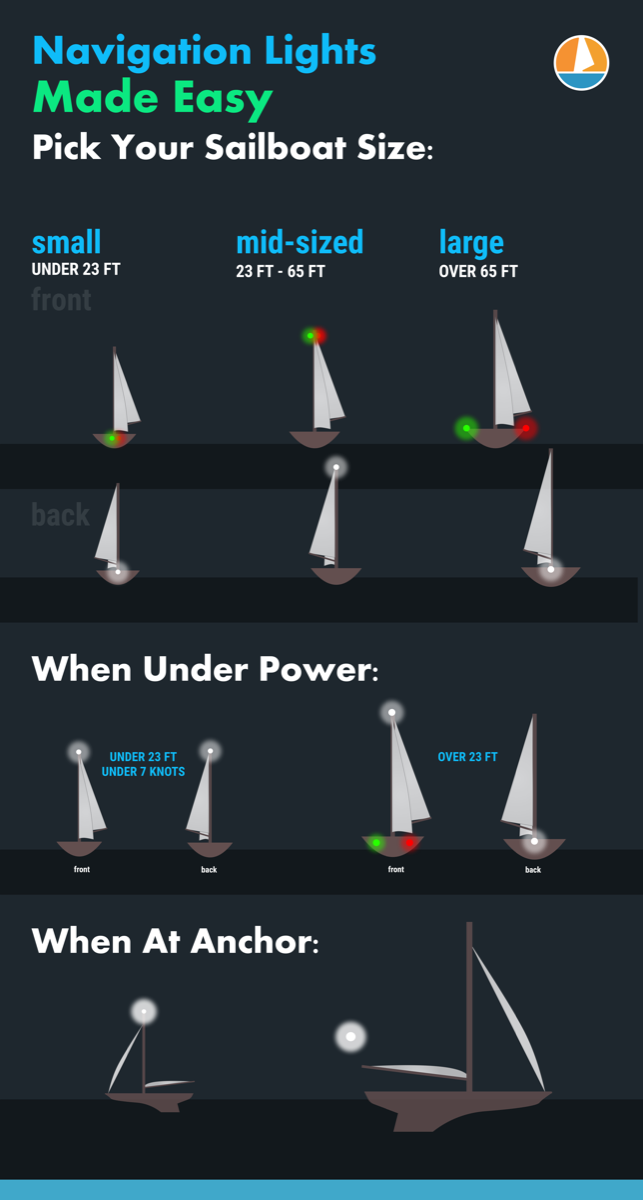

On this page:
What are the official colregs rules for your sailboat, what about the uscg (united states coast guard) rules, lighting at anchor, identifying the boats around you.
The International Regulations for the Prevention of Collision at Sea , abbreviated "COLREGS" is very specific about the lights required, their shapes and sizes, and the distance they must be visible. For the smaller boat, the following definitions apply.
- Masthead Light - a white light placed centerline on the boat showing an arc of 225 degrees with 112.5 degrees either side of the front of the vessel.
- Sidelights - A red light on the port side and a green light on the starboard. They must show an arc of 112.5 degrees from centerline of the bow.
- Stern light - A white light on the stern of the boat showing an unbroken arc of 135 degrees from centerline of the vessel.
- All-round light - A light showing in an unbroken arc of 360 degrees.
The good news is you need not measure these angles. Any properly installed USCG or COLREGS approved light which will cover the correct arcs. If you have to replace the original light from your boat, make sure it's with an approved replacement.
Lights When Sailing
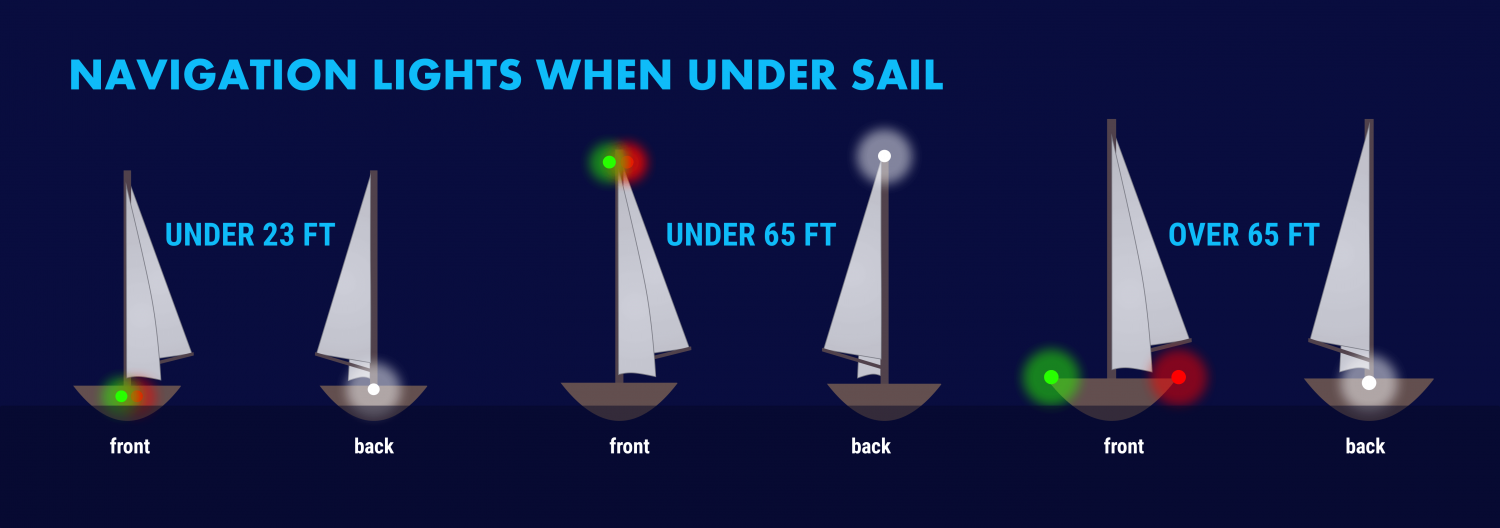
The specific rules for a sailboat under sail are in COLREGS Rule 25 and vary slightly with the size of the boat. A sailboat powering is considered a power boat and falls under in Rule 23.
- Under 23 feet (7 meters) - side lights and a stern light, possible. If these lights can not be displayed a light must be kept at hand to help avoid a collision. This can be a bright flashlight.
- Over 23 feet - Side lights visible to one nautical mile and stern light visible for two.
- Vessels under 65 feet may combine both sidelights into a single lantern on the bow.
- May show a tricolor light on the masthead instead of sidelights and a stern light. It's one or the other though, do not show these lights at the same time .
- Masthead light must be visible for three nautical miles, all other lights must have a two nautical mile visibility.
- Side lights must be separated.
- May not show a masthead tricolor light.
- Masthead light must have five nautical mile visibility, all other lights must be visible for two nautical miles.
- Optional masthead lights - any vessel under sail may display a red light over a green light at the masthead with sidelights and stern light. The red over green may NOT be displayed with a masthead tricolor light. It's one set or the other.
Lights When Motoring
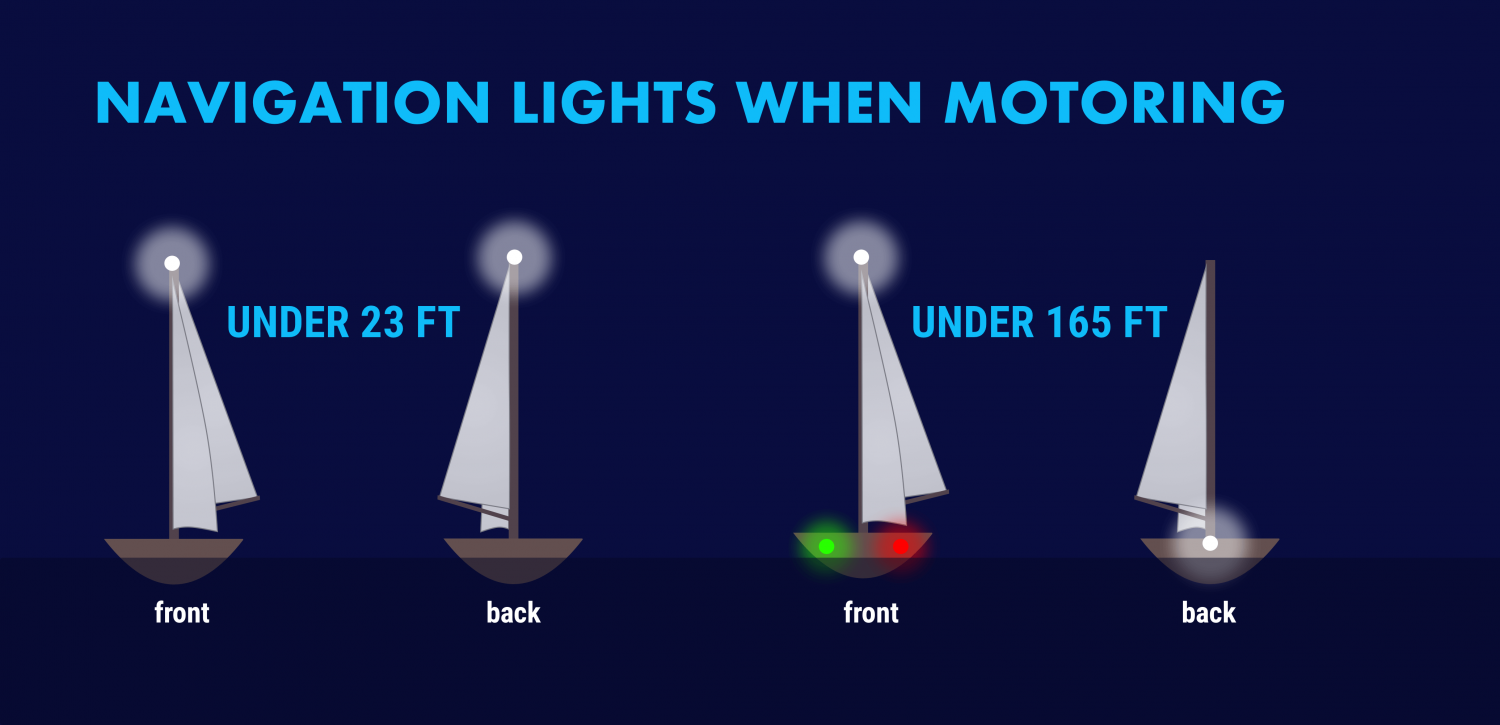
For all navigational purposes a sailboat under power is considered a power boat. This includes motor sailing - if the engine is on and providing propulsion you are on a power boat, even if the sails are up . This applies to navigation lighting, sound signals in fog and limited visibility, and rights of way.
Sailboats under 50 meters under power need to show:
- A masthead light
- Stern light
A power-driven vessel under 23 feet (7 meters) that does not exceed seven knots of speed may display an all around white light, though sidelights should be used if available.

The USCG has published its own "Rules of the Road" that are based on the COLREGS. In addition, it has rules for the "Inland Waterways" for rivers, inland lakes and the Great Lakes.
The good news is this has no impact on what you have to do with your own boat.
They mostly relate to lighting changes on towed vessels like barges and tugs. For example, a vessel towing or pushing another vessel in the ocean under COLREGS shows two masthead lights, sidelights and a stern light, whereas in Inland Waterways the towing or pushing vessel displays two yellow towing lights instead of a white stern light.
If you sail on lakes, rivers or the Great Lakes where towed commercial traffic is common you should learn the inland lights, but coastal or ocean sailors will never see these.
When you anchor outside a designated mooring field, you should display an all around white light at the masthead or as high in the boat as practical.
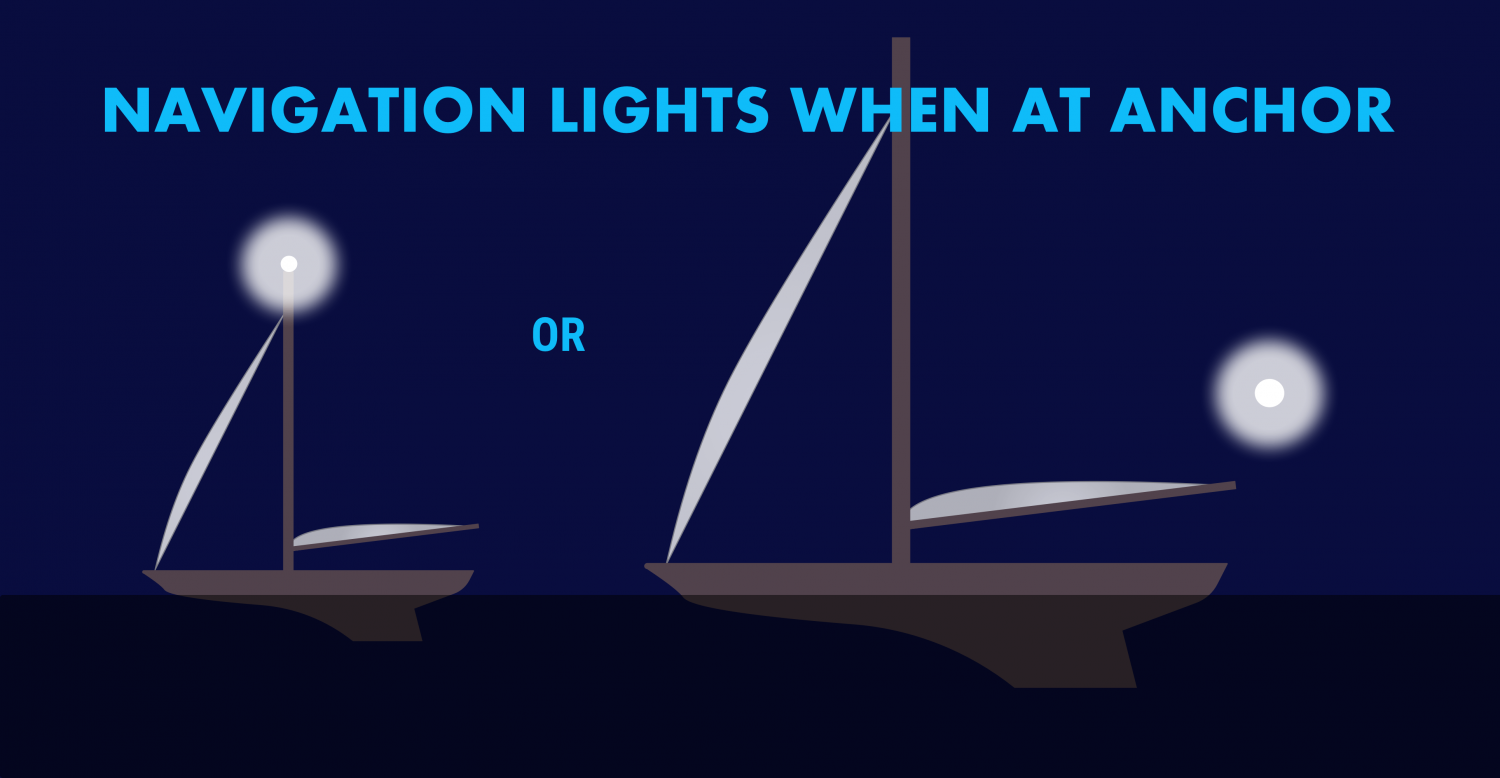
If your boat is large and has a very tall mast, you may wish to display another light closer to the waterline. Boats approaching in the dark may not see a light on a mast sixty or seventy feet in the air when they are close to your boat.
We use a simple garden path light on our stern when we anchor, left in a rod holder or flag socket. It comes on automatically at dusk and is a cheap and easy way to be more visible. There is no specific rule stating you can not display more lights than required, or the nature of any lights beyond the required all around light.
The COLREGS also specify that a round black "daymark" should be displayed in the rigging of any vessel at anchor. Very few small vessels observe this, however it is the correct display for a vessel in an anchorage.
If you tie to a mooring in a marked mooring area you are not required to display anchor lights, but there is no harm in doing so.
The other important reason to know your lights is to figure out what's going on around you at night. The water may be ablaze with white, red, green and other lights at night and they are your first key to avoiding collisions and problems.
All combinations of lights for fishing boats, commercial vessels, and so on are outside this post‘s scope. The odds are small you will encounter a submarine, seaplane or hovercraft at night, but there are regulations regarding specific lighting for each of those vessels!
There are a few fundamentals to help you figure out what that is you see on the horizon, which way it is going, and whether it is a danger to you.
Port Wine is Red
The fundamental rule is that red sidelights will ALWAYS be on the port side of a vessel, and green lights will always be on starboard. However, some vessels can use all around red and green lights for other purposes, though those will be higher than sidelights.

The light‘s on a ship is not important, some large tankers and freighters will have their sidelights far aft and put them on the superstructure for better visibility. It is not safe to assume that sidelights you can see are on the bow of large vessels .
When you can see the color, you know which way the bow is pointing. If it's red, it's pointing more or less to the left and will travel in that direction. A green light shows it is heading more or less to your right.
If you can see the red and green lights at the same time, you are looking directly at the bow of the vessel. When you are far away, this isn‘t as alarming as if you are close crossing. Seeing red and green lights together on a vessel is something you never want to see for long.
Be aware of red and green lights used in combination with other red, green and white lights. These may not be running lights and could have other significance.
Tankers, Freighters and Large Ships
Tankers, freighters and large ships will have side lights, a stern light and a masthead light. In addition, on vessels over 50 meters there will be a second masthead light further aft and higher than the forward light. The masthead light positions are a better tipoff to the bow direction and how far from the bow the sidelights might be. Remember - on a large vessel the sidelights may not be at the bow or even close to it.
USCG Inland Rules allow for a second all-around white light on large vessels on the Great Lakes instead of a second masthead light.
Fishing Boats
Fishing boats engaged in fishing will have more complex light displays. When they aren't fishing, they will show lights like any power vessel, but Rule 26 spells out light combinations that vary by the fishing activity being done. In general:
- Boats which are Trawling but not making headway will display a green all-around light over a white all-around light , and a masthead light aft of these lights. Boats making headway while trawling will show these lights, plus sidelights and a stern light.
- A vessel fishing other than trawling will show a red all-around light over a white all-around light . When making way they will also show sidelights and a stern light.
- If a vessel has gear more than 150 meters away from the boat, it will show a second all around light in the direction of the gear. The best rule is to give fishing boats as wide a berth as you can at night. They're easy to pick out if you check the top light configurations but their course may be difficult to predict.
Towing and Pushing
Towed vessels can be the most dangerous to cross, but they have the most lights to tell you what is happening. Refer to COLREGS or the USCG Rules of the Road Rule 24 for all combinations You can pick a tow/push vessel out with the following lights:
- Two or three masthead lights in a vertical line. Three masthead lights shows a tow over 200 meters. Additional masthead lights may show for larger tow vessels.
- A towing light (yellow light with the same characteristics as a stern light) directly above the stern light.
- The will also have side lights and a stern light.
- The towed vessel will show sidelights and a stern light. Lighting may vary under USCG inland rules, where towing lights may replace stern lights. Learn these differences if this is your regular cruising ground. If you think there is a tow ahead of you, always go well behind the aft most set of lights. Never go between a tow and avoid crossing ahead if possible as it may restrict their maneuverability.
Special Situations
There are several rare situations you may encounter. As a general rule, if there are a lot of lights and you don't understand them look for the sidelights on a moving vessel. If you can find them and figure out the direction it is moving, it makes the vessel easier to avoid. Stay well clear of lights you do not understand if you can avoid them without risk.
Most of these signals are used by larger, commercial vessels and you will not need them.
They use these light combinations with other light combinations. For example a towing vessel may also be restricted in maneuverability, and a vessel constrained by draft will show running lights if moving.
- Not Under Command - two all around red lights in a single line
- Restricted in Ability to Maneuver - red, white then red in a single line
- Constrained by draft - three all around red lights
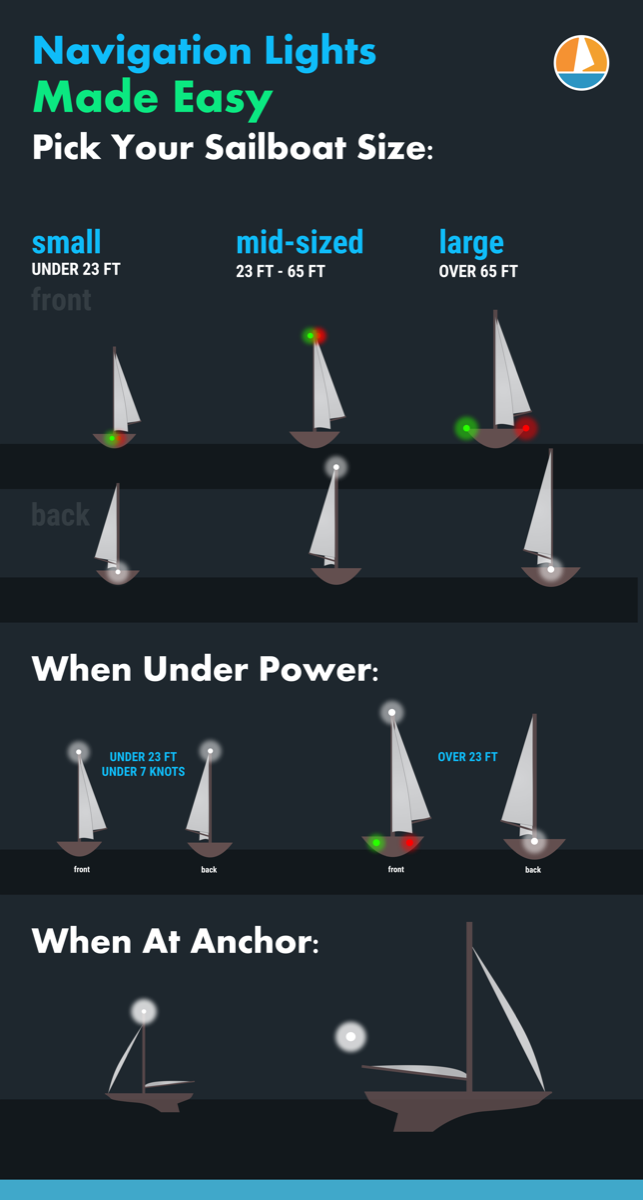
Leave a comment
You may also like, 17 sailboat types explained: how to recognize them.
Ever wondered what type of sailboat you're looking at? Identifying sailboats isn't hard, you just have to know what to look for. In this article, I'll help you.

The Ultimate Guide to Sail Types and Rigs (with Pictures)
Own your first boat within a year on any budget.
A sailboat doesn't have to be expensive if you know what you're doing. If you want to learn how to make your sailing dream reality within a year, leave your email and I'll send you free updates . I don't like spam - I will only send helpful content.
Ready to Own Your First Boat?
Just tell us the best email address to send your tips to:

Ultimate Guide To Marine Navigation Lighting
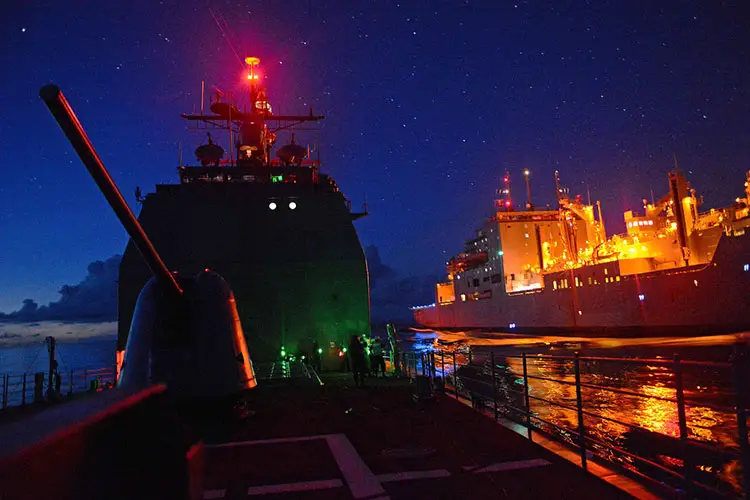
If you drive a car or even ride a bicycle, you might be well aware of the necessity of lighting systems (though in the second case the word ‘system’ doesn’t quite apply) for the safety of you and the people around you. The thing applies just as well for ships. But since they are much larger than a car, the lighting system or navigation lights on ships is a little bit more complicated as well. Marine navigation lighting is also one of the most critical aspects of nautical studies.
It is mandatory for boats of all sizes to have a navigation system . This is to make sure that the chances of any significant accident are minimized. The United States introduced the system in 1838, and the United Kingdom followed suit. Before being internationally adopted in 1897 suitable guidelines were established by the International Maritime Conference which was established in 1889. Three colors were chosen that were to be used for the light colors. They were red, green and white. This was based on a set of rules specified by the US and are followed around the world to this date.
This article discusses the different rules and regulations of using navigation lights, their importance, and also some basic marine navigation lighting systems along with their positions and ranges.
Marine Navigational Lights, Rules and Regulations
A standard pattern of marine navigation lighting is followed for the identification of both the vessel as well as the IALA buoyage system at night. If you are required to move from sea to a channel you need to have a list of all the IALA as well as the other fixed navigational lights that are visible on entering the channel. This includes distant lighthouses as well.
If you also make a note of the inland features like the radio and television transmitter masts it will benefit you because they act as good navigational aids due to their height and warning lights.
The helmsman should not be using any bright light source in the cockpit area and should rather take the aid of red lights and very dim white lights in the galley and navigation area. This is because he needs to preserve his night vision so that he can accurately interpret both the buoyage marine navigation lights as well as the boat navigation lights of other vessels.
The nautical almanacs contain the details of each and every visible maritime light signal coming from navigational markers that are both inside and outside the channel.
All the details about any particular light can be found in a published list or on a marine navigational lights chart: its color, period, and in some cases even the elevation and range of the beacon. Use the chart to keep a tag on the lights you are passing by putting a tick mark on the lights that you are about to pass and as the boat sails past, the tick is checked.
You will get two visual clues to figure out how far you are away from a buoy. The light will elevate from the horizon at 0.5 nm and at about 200m, the light will reflect on the surface.
Position of Boat Navigation Lights
Most of the variations that can be found in the different vessels can be read about in most almanacs. At the very basic level, a vessel needs to show a red light to port and green light to starboard. Depending on the size of the vessel, one or more colored or white lights are used as well.
For vessels that are 12 ft in length or shorter, the navigation lights must be visible from a range of one nautical mile and for the ones that are longer than 12 meters the required visibility range is 2 nautical miles. From 5 degrees above to 5 degrees below the horizontal happens to be the required minimum intensity in a vertical sector.
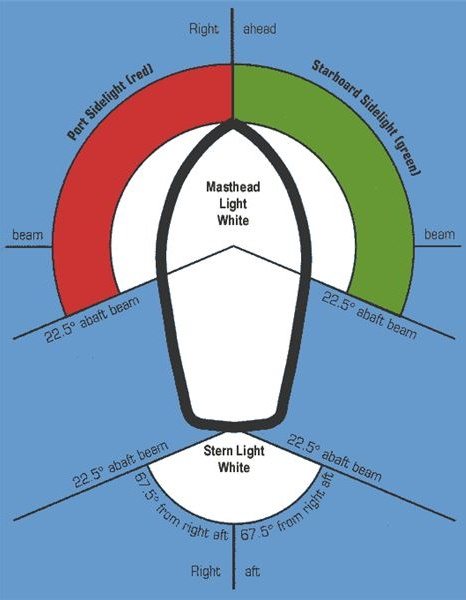
International Navigation Rules state that the boat navigation lights should be placed above the uppermost continuous deck. In case separate fixtures are used for the red and green sidelights, the masthead or all-round white light is placed as close as possible to the vessel’s fore and aft centerline. The masthead or all-around light needs to be positioned at least 1 m or 3.3 ft above the sidelights.
Following are the basic positions of navigational lights. We will discuss the same in greater detail ahead.
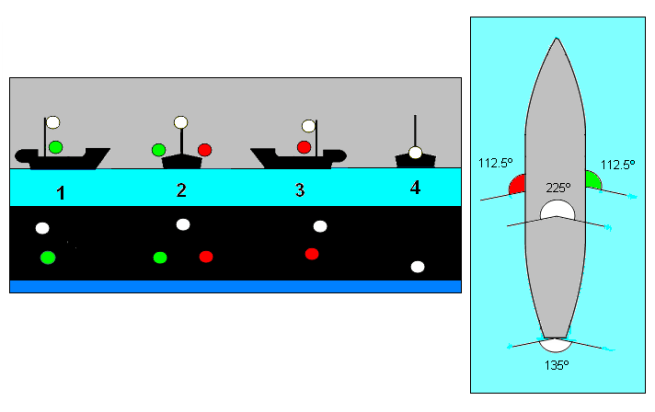
Also read: What Is A Marine Sextant?
Boat Navigation Light Regulations
Several rules and specifications are related to the type, size, layout, arc, and distance of visibility of boat navigation lights used by all vessel types which are collectively known as the International Regulations for Preventing Collisions at Sea or COLREGs . The navigational lights used are known as ‘COLREG lights and shapes. A boat might be anchored or underway, under sail or power, or fishing or trawling. These various situations can be communicated through multiple combinations of boat navigational lights.
In addition to the primary navigation lights, vessels may also display one or more steaming lights. These lights are very useful for it gives details about the various aspects of the ship like whether it is in the sail or under power, the direction in which it is going and, in some cases, even the size of the vessel. If a ship is engaged in a specific task that might involve certain restrictions, that too can be indicated with some extra boat lights.
Always maintain the lighting system and display the correct navigation light combination to make other vessels in the vicinity aware of your course and state as to whether your vessel is under power or not. If you follow this a considerable amount lowers the chances of a collision. Here is a list that you might use to familiarise yourself with the basics of the lighting system.
- Basic Navigation Light White Light : Small dinghies that are 7m or less in size are required to carry a torch having a white light that can be flashed when needed.
- All-Round White Light: An all-round white light is expected to be displayed by a small boat, up to 7ft long that is under power and can go beyond 7 knots of speed. This light must be visible at an angle of 360 degrees and from two miles away. An all-around white light is also used when the boat or vessel is at anchor but not at a designated anchoring area. This is to make sure that the ship is visible to all the nearby ships to avoid any accidents.
- Stern and Combined Side Lights : A stern light is a white light that is installed at the end of a boat. A vessel that is over 7 m or 23 ft in length is expected to show red and green sidelights when sailing. Each of these lights needs to cover an arc of 112.5°. The sidelights may be combined in one lantern at the bow when below 25 m or 65 ft. The white stern light can be seen over an arc of 135°. These lights need to be visible from a distance of a mile and need to be placed 39 inches below all white lights for boats of lengths equal to or less than 12 ft.
- Masthead Light : A combination of sidelight and stern light in a tricolor combination may be used sailing yachts of heights 20 m or lower. A masthead light is required by vessels of lengths between 39.4 ft and 65.6 ft. It is placed in the masthead whose height provides excellent visibility. Still, stern lights and sidelights should be fitted separately in case of or use under power along with steaming light. This kind of light needs to be visible across an angle of 225 degrees and from a minimum distance of 2 miles.
- Separate Lights : The displaying of the tricolor masthead light is not allowed in the case of yachts that are longer than 20 m or 65 ft. Instead, they use them separately. Often on large sailing vessels, these all-around, red over green lights are present. These red and green sidelights need to be visible from a distance of one mile and across an angle of 112.5 degrees.
- Steaming Lights Combined Lights : A combination of the masthead and stern light are used in the case of power crafts that are less than 20 m or 65 ft in length. The arrangement is present at the bow.
- Single Steaming Light : Visible over a 225 degrees arc, a masthead steaming light is used by power-driven vessels that are up to 50 m or 160 ft long. Separate stern lights and sidelights are used in case of a length exceeding 20 m or 65 ft.
- Two Steaming Lights: Power-driven vessels that span over 50 m or 160 ft in length display two masthead steaming lights. The forward light placed lower than the aft light with both of them being visible over an arc of 225° with the sidelights and separate stern light.
The area of the nautical lighting system is a precise business and requires some amount of study and a good deal of responsibility. It is because its application forms a core element in safe marine navigation.
Similar Posts

Container Depot: Functions, Uses & Design
In simple terms, a container depot can be defined as a storage area for shipping containers once they are empty (after being unloaded). It won’t be an exaggeration to say that the shipping industry is the backbone of global trade and commerce. Around 80% of the global trade by volume and 70% of global trade…
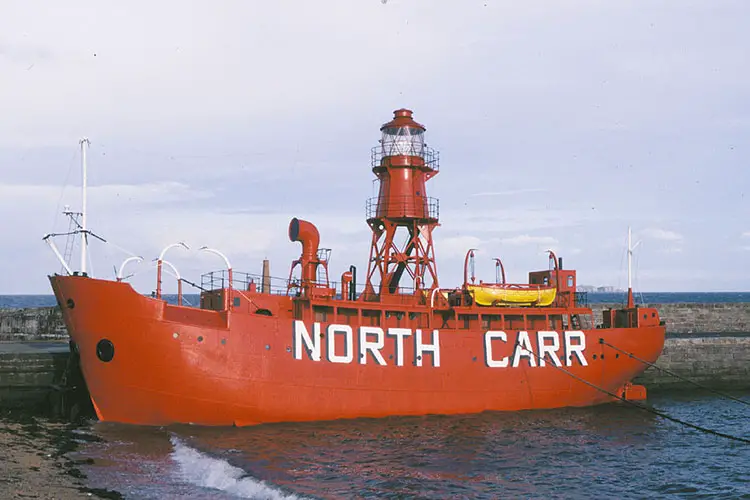
What Is A Lightship?
What is a Lightship? A lightship or a light vessel is a ship that can also operate as a lighthouse. These types of ships are used in waters that are too deep and where lighthouses cannot be constructed. Lightships play an important role in assisting other ships to navigate through waters. A lighthouse is a…
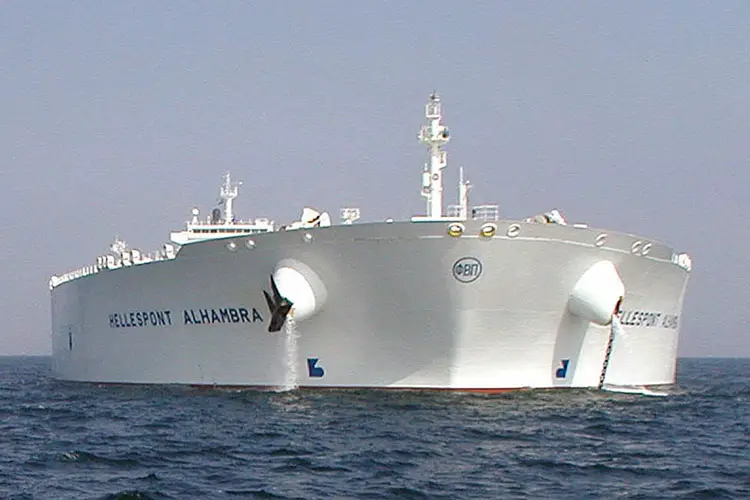
What Are TI Class Supertankers?
The TI class supertankers is a class of the four largest ships in the world by displacement, gross tonnage, and deadweight tonnage. They are owned by Tankers International L.L.C. The TI in the name stands for the same (Tankers International). These were the first ultra-large crude carriers built in nearly the past three decades. They…
![The Unsolved Mystery Of Devil’s Sea [Dragon's Triangle] 7 The Unsolved Mystery Of Devil’s Sea [Dragon’s Triangle]](https://www.maritimemanual.com/wp-content/uploads/2019/03/devils-sea-dragons-triangle.jpg)
The Unsolved Mystery Of Devil’s Sea [Dragon’s Triangle]
The ocean is full of mysteries and stories. These stories have been experienced, created, and propagated by seafarers since time immemorial. One such mystery that has befuddled the world is the mystery of the Devil’s Sea or also known as the Dragon’s Triangle. We have heard numerous stories of lost cities (Atlantis), vanishing ships, mythological…
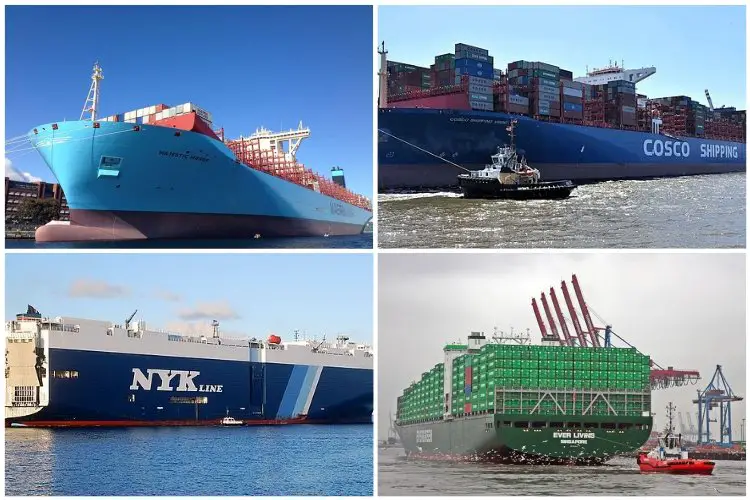
Top 21 World’s Largest Container Ships In the World
Humans have always strived to build the biggest, largest and fastest ships. So, today we will be telling you about the largest container ships in the world. Container ships are cargo ships that are exclusively used for the carriage of truck-size intermodal containers. The capacity of a container ship is expressed in TEU that is…
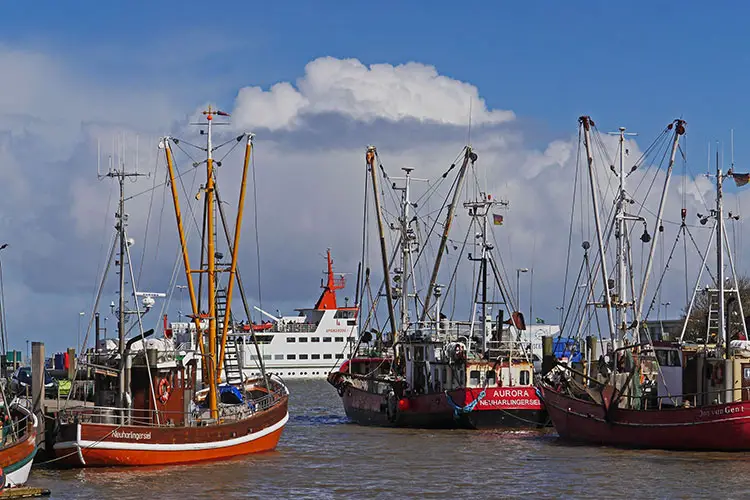
Vessel Monitoring System (VMS)
What Is A Vessel Monitoring System? A Vessel Monitoring System (VMS) is defined as a communication system used to monitor, control, and survey fishing activities, usually commercial. It is employed in almost every fishing vessel in the world today. This article discusses the importance of the vessel monitoring system as an easy and reliable way…
Leave a Reply Cancel reply
Your email address will not be published. Required fields are marked *
Save my name, email, and website in this browser for the next time I comment.
This website uses cookies to improve your experience. We'll assume you're ok with this, but you can opt-out if you wish. Read More
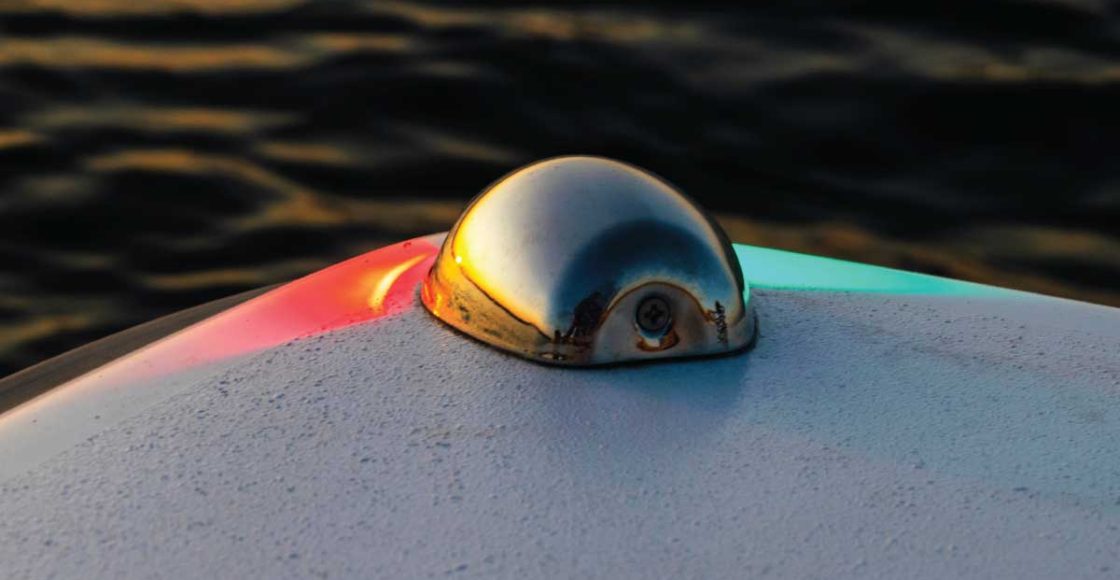
Boat Navigation Lights: Understanding the Basics

Table of Contents
For many boaters, the best way to end a beautiful day on the water is to watch the sun slowly drop below the horizon while it lights up the clouds and sky above. Others feel better heading to the dock before the sun goes down, while there is still plenty of light to illuminate the channel markers and other potential dangers.
Besides understanding boat navigation light rules, it is also important to understand:
- The overall purpose of boat navigation lights
- How to properly use boat navigation lights
- What the different colors (red and green) mean
Own a boat? Earn an avg. of $20K per season renting it out on Boatsetter
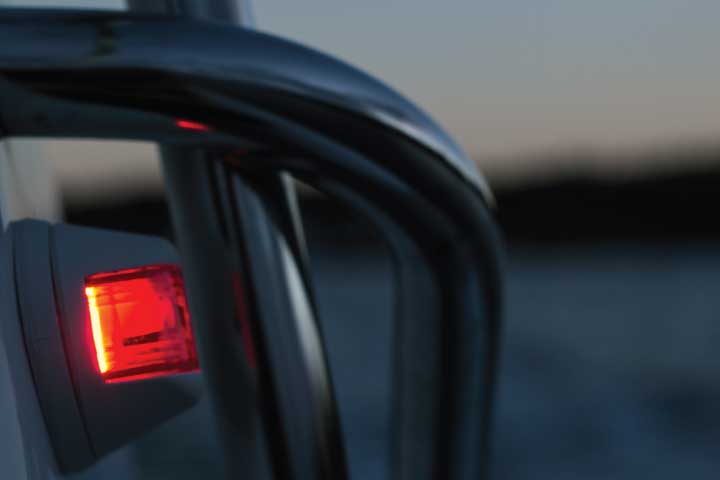
How do boat navigation lights work?
Boat navigation lights, or “nav lights,” are the colored marker lights visible on either side of the vessel and at the stern . These lights play essential roles in identifying the ship’s length, direction, and purpose!
The colored marker lights and where to find them go as follows:
- The boat’s port side is marked with a red light.
- The starboard side light is green.
- When looking at the boat’s transom or stern, a white light may be visible.
Keep in mind large boats and ships may use other colors, like yellow.
Next time you’re boating at night , say thanks to your navigation lights. They allow you to see other boaters in the dark and help prevent collisions. But there is much more to boat navigation lights than that.
How to use boat navigation lights
Each of the boat’s navigation lights is only visible for so many degrees of a circle to prevent confusion and accurately identify which side is in view.
By noting which colors are visible on another vessel, boaters can identify which direction the other boat is facing or headed. Knowing a boat’s direction can be especially important when crossing paths with another vessel in the dark.
If you walked around a boat at night while the navigation lights were on, the color visible would change depending on where you stood. When looking at the port side of the boat, the red light would be visible from dead ahead of the vessel to just past the center of the port side or through 112.5 degrees of a circle. Walk to the starboard side, and the green light would be visible from the bow to just past the boat’s center, or another 112.5 degrees.
Stand at the back of the boat, and you will see the white light visible for a total of 135 degrees from one side of the vessel to the other. Add up all three, and you’ll get 360 degrees.
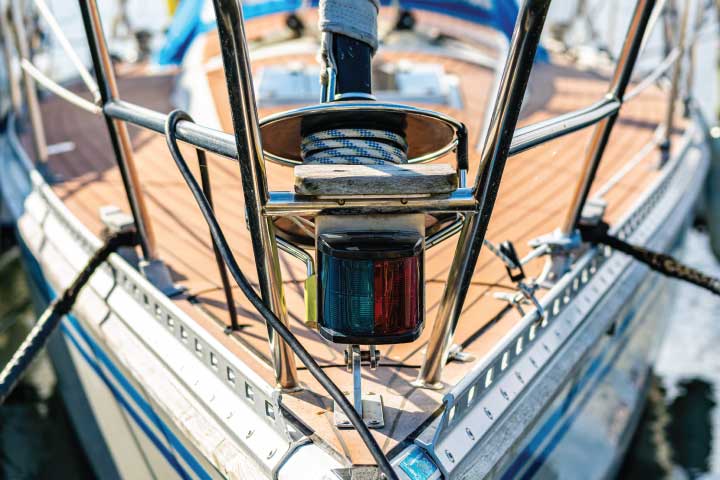
Boat navigation light color meanings
If you were on a boat at night and could see nothing but the different colored lights of another vessel ahead of you, you would still know exactly which way that boat was going.
- If you could only see the red light ahead of you, you would know that you are seeing the other vessel’s port side, or it is crossing in front of you from your right to left.
- The opposite is true if you saw the other vessel’s green light . You would be looking at the other vessel’s starboard side or watching the boat pass in front of you from left to right.
- If you see both red and green lights , then the other vessel is coming straight at you if you can see both red and green lights.
- If you can only see the white light and nothing else, you would look directly at the other boat’s stern as it drives away.
- Red and white means the boat is driving away from you, crossing from right to left.
- On the other hand, green and white signal that the vessel is moving away from you, crossing from left to right.
When renting a boat on Boatsetter , make it a habit of checking that navigation lights are working. You should turn on the navigation lights even if the sun is out. It’s the best and safest boating practice.
Want additional resources for boating?
Check out the links below for more information on boating.
- Navigation lights study guide
- Pre-departure boating checklist
- Boat Spring Commissioning Dewinterization Checklist
Don’t let your boat sit idly by. List it with us to earn $20K on avg.

Chuck Warren fell in love with boats at 9 years old while helping to restore his grandfather’s 1939 44-foot Elco cruiser. A lifelong boater, Chuck has experience operating large and small vessels on the waters of the Atlantic, Gulf of Mexico, Caribbean, and the Great Lakes.
During his 35-year marine industry career, Chuck has been the driver for several offshore powerboat racing teams, the chief engineer aboard a Caribbean research and salvage vessel, captain of a Florida Keys sunset cruise, and more.
Today, Chuck is a boating industry writer, copywriter, and captain who lives on his 40-foot boat in the summer when he isn’t delivering vessels around the Great Lakes or teaching new boaters to drive. Winters are split between the West Michigan lakeshore and wherever his travels take him.
Browse by experience

Explore articles
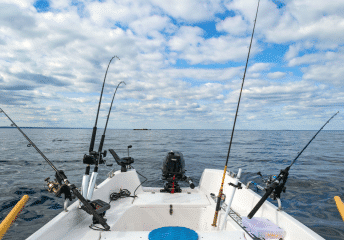
The Best Small Fishing Boats: A Short Guide
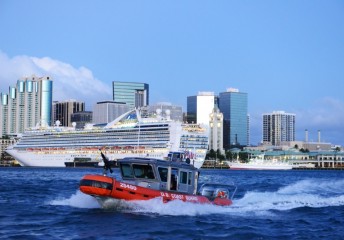
The Ultimate Boat Rental Safety List
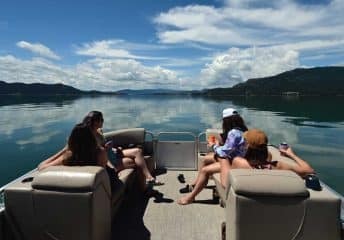
Pontoon vs. Deck Boat: What’s the Difference?
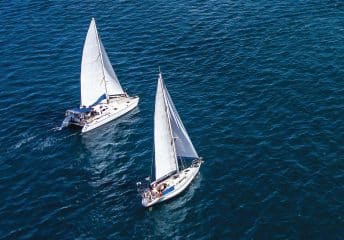
Catamaran vs. Monohull: Which Is Better?
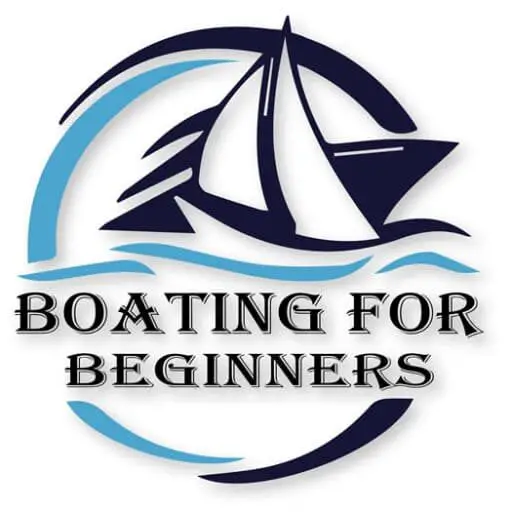
Boat Lighting – Complete Guide to Navigation Lights
I was sitting in the garage the other day admiring my boat when I noticed the green navigation light on the side of the hull, and it dawned on me that I haven’t had the boat out after sunset yet. It also got me wondering about the different places I’d like to travel this summer and what it would be like to navigate in the dark if I had to.
In addition to the legally required lights, I highly recommend having a marine waterproof spotlight in your boat at all times ( this is the one I prefer, which you can buy on Amazon with tons of good reviews ). The little headlight on a boat is nowhere near bright enough to safely navigate if you get caught on the water at night. Trust me, it can save you thousands in boat repairs and a dangerous situation.
I wanted to make sure that I fully understood everything there was to know about navigation lights, so I did some online research. I’ve put together a complete guide of the information I found online talking about the different navigation lights and what I needed to know about them.
What Are Navigation Lights On a Boat?
Boats require specific lighting configuration when operating between sunset and sunrise, or at times when visibility is restricted such as when it’s raining or foggy. Navigation lights are used to help other boaters see you when visibility is reduced, and it allows you also to see the other boaters to avoid collisions.
Navigation lights are also used to communicate with the other boats sharing the water. For example, the navigation lights can tell another boater, what size your vessel is, and in which direction you are heading. This information can be used by the boat caption to determine what the appropriate course of action would be as you approach each other.
By law, the navigation lights come in specific colors; white, red, and green. Even the arc of the illuminated light, the range of visibility, and the location is all specific to what type of vessel you are operating.
Do not assume that your boat came with the appropriate lighting or equipment from the factory or showroom. It is your responsibility to make sure that your boat has the proper navigation lighting configuration before you head out on the water.
What Type Of Boats Requires Navigation Lights?
Basically, in a nutshell, all boats require navigation lights if you’ll be operating them between sunset and sunrise, or whenever visibility is reduced.
This goes for the following types of vessels:
- Motorized vessels
- Non-motorized vessels
- Sailing vessels (Operating under sails)
- Sailing vessels (Operating under motor power)
- Vessels engaged in fishing
- Vessels engaged in trawling
- Towing vessels
- Anchored vessels
- Human-powered vessels such as Rowboats (Kayaks and canoes)
What Lights Are Required On a Boat?
Boats are required to have navigation lights. Navigation lights are required whenever you are operating your vessel between sunset and sunrise, or during any other times when your visibility is restricted from elements such as fog or rain.
The type of lights required depends on the length of your vessel as well as if it’s a powered or non-powered vessel. But in general, all navigation lighting systems will consist of red and green sidelights, as well as one or more white lights. A red sidelight indicates the port side of the vessel, while a green light shows the starboard side of the vessel. The white light in most cases is called an all-around light, which means it can be seen from any angle by other boaters.
Another type of navigation light is a yellow light. A yellow light is not very common to see, but if you do happen to see one, it would mean that a lead boat is towing another boat.
It is your responsibility to make sure you have the proper navigation lighting. It is also recommended that you take spare bulbs with you. The USCG doesn’t care if the lights were working when you left, they only care that the lights are not working when they are required.
Lights Required For Power Vessels Underway:
A powered vessel includes all motorized boats, including sailboats that use a motor.
Vessel length: Under 12 meters (39.4 FT.) Lighting requirement:
- One all-around white light that is visible at 360 degrees, and can be seen from two miles away. The all-around white light must be mounted at least 39 inches above the side lights.
- A pair of red and green sidelights that are visible 112.5 degrees and can be seen at least one mile away.
Vessel length: 12 meters to 20 meters (39.4 FT. to 65.6 FT.) Lighting requirement:
- A white masthead light located at the front of the boat, pointing in the direction you are traveling. This must be visible at 225 degrees and from two miles away. The masthead light must be positioned at least 8 feet above the gunnel.
- A white stern light located at the rear of the boat that is visible at 135 degrees and can be seen from 2 miles away.
Lights Required For Non-powered Vessels Underway:
A non-powered vessel includes sailing vessels and all other types of vessels that don’t have motors such as paddled, poled, or rowed.
Vessel length: Under 7 meters (23 FT.) Lighting requirement:
- You are required to display a white light that can be seen by other boats. White light could consist of a flashlight, torchlight, or lantern.
- If you can, it is recommended that you have an onboard 360-degree white light all-around set on the horizon, with a distance of at least two miles.
Vessel length: Over 7 meters (23 FT.) – NEED 3 IMAGES Lighting requirement:
- A pair of red and green sidelights, that are visible 112.5 degrees and can be seen at least one mile away.
- Alternatively, for sailboats of that are over 7 meters in length, they can display what is called a tricolor light A tricolor light can only be used while the vessel is underway using sails alone and never while underway by power. This light should also never be used at the same time that the regular sidelights are on. Either the tricolor light or sidelights can be displayed, but never both.
Lights Required For Vessels At Anchor (Less Than 50 Meters):
This rule applies if you are anchored away from a designated area such as a marina.
Vessel length: 12 meters to 20 meters (39.4 FT. to 65.6 FT.) Lighting requirement:
- White all-around light is required to be used so you are visible to other ships that could be in the area.
Due to variances in state boating laws/regulations, NASBLA does not provide state-specific information. You may contact your state boating office for the most accurate information. Contact information can be found here: https://www.nasbla.org/about-nasbla/boating-contacts .
Understanding The Difference Between Port And Starboard Lights
While standing on the deck and facing the front of the ship, the left side is called the Port and the right side is called the Starboard. The port is always red , while the starboard is always green .
This information is crucial to understand if you ever find yourself trying to navigate the waters at night or while your visibility is limited. For example, if you are sailing towards another vessel, you will be able to tell if that vessel is heading towards you, or if it is heading away from you based on which side the green and red lights appear to you.
If you see a red light coming towards you, that would mean the other boat is on your right, which means that boat would have the right of way. If you see a green light from an oncoming vessel than you would know that it’s on your left, which means you have the right of way.
When Should Navigation Lights Be Displayed On a Boat?
Navigation lights are required to be displayed in between sunset and sunrise, and anytime that visibility is restricted. For example, due to fog or rain.
Where Can You Buy Navigation Lights?
As discussed earlier, not all boats automatically come with the proper display of navigation lights. It is your responsibility to ensure that your boat has all of the proper equipment for your safety and the safety of others.
The prices for navigation lights will vary anywhere between $9.00 to $100.00 depending on what style and manufacturer you buy. You could even spend as much as $500.00 on some of the higher-end navigation lightings. Be sure to shop around and take a look at what is available, to ensure that you are finding the best lights, at the best prices.
Definitions
All-Round Light: White (32pt/ 360°) Masthead Light: White (20pt/ 225°) Sidelights: Red (10pt/ 112.5°) & Green (10pt/ 112.5°) Stern Light: White (12pt/ 135°)
Similar Posts
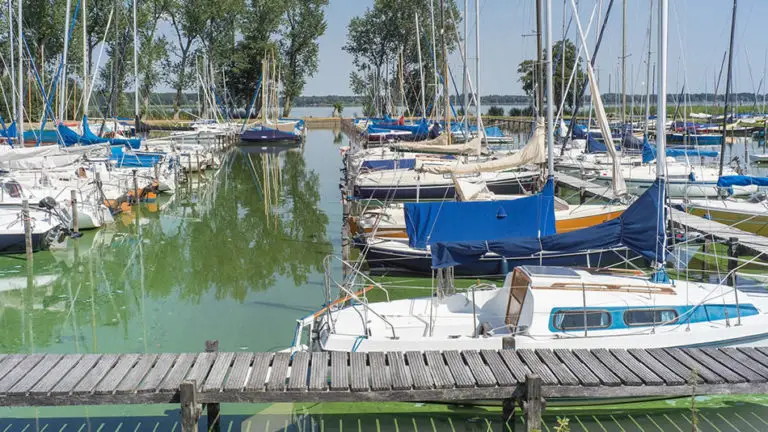
How To Get Rid of And Prevent Algae on a Boat
I have to admit; I didn’t know too much about algae until I began researching it. I figured if my son were going to be coming out on the water with me, then I’d better learn more about it and make sure it wasn’t going to be harmful to us. As it turns out, there…

Can Boats Survive Tsunamis? Everything You Should Know
Last night at dinner I was talking to my wife about the different places we could go this upcoming summer for a family vacation, and somehow the conversation turned to tsunamis. I have heard in the past that being on a boat during a tsunami is a safe place to be, but I still wanted…

Starting Boat Motor Out Of Water
I’ve heard a lot of boaters talking about how they start their inboard or outboard engine while the boat is on land so they can test the motor before they have it on the boat launch. That got me wondering how safe it could be for the engine, so I did some research. As it…
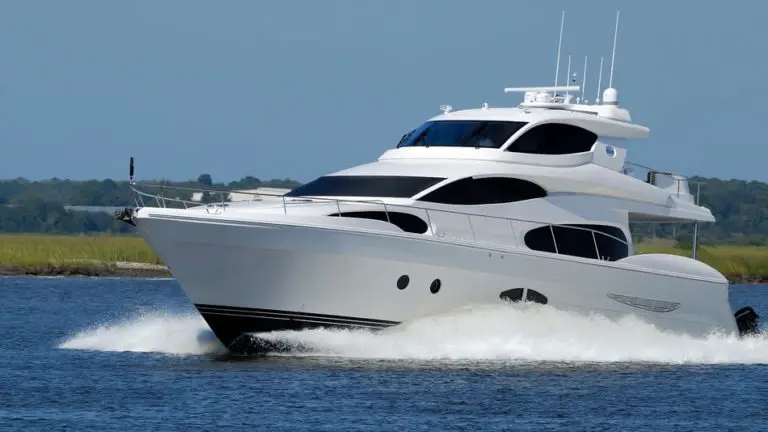
Buyer’s Guide for a First Time Boat Purchase
Our retirement dream boat is a beautiful 54′ long luxury cruiser yacht with all the bells and whistles. Powerful enough to plow through the roughest waters as we head towards the Caribbean for a few weeks. But before I can get ahead of myself with such a lavish purchase, I decided to keep things simple…

Helpful Tips For Towing a Boat
Every boat owner knows that being able to take your boat everywhere you want is a privilege and a great way to spend your time. However, there are specific rules you have to abide when you want to tow a boat. Some states require special trailer brakes especially if the boat has more than the…
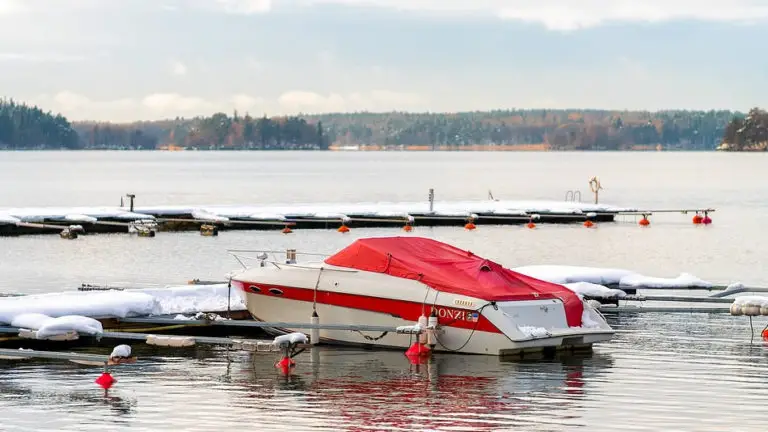
Everything You Need to Know for Winterizing a Boat
With winter right around the corner, the cold air will soon be taking over, causing temperatures to drop below freezing for half of the country. But before that happens you need to make sure that your boat is ready. Without properly winterizing your boat, you run the risk of water freezing and causing the engine…
Boat Reviews
- Aquila Boat Reviews
- Aspen Boat Reviews
- Avalon Boat Reviews
- Aviara Boat Reviews
- Axopar Boat Reviews
- Barletta Boat Reviews
- Bayliner Boat Reviews
- Centurion Boat Reviews
- Charger Boat Reviews
- Cruiser Yachts Reviews
- Formula Boat Reviews
- Fountaine Pajot Reviews
- Freeman Boatworks Reviews
- Galeon Luxury Yachts Reviews
- Intrepid Boat Reviews
- Jupiter Marine Reviews
- Manitou Boat Reviews
- Native Watercraft Reviews
- Phenom Yacht Reviews
- Pursuit Boat Reviews
- Sailfish Boat Reviews
- Sea Ray Boat Reviews
- Sea-Doo Watercraft Reviews
- SeaVee Boat Reviews
- Solace Boat Reviews
- Windy Boat Reviews
- X Shore Boat Reviews
- Yamaha Boat Reviews
- Boats Specs
- Marine Pros
- Boat Insurance
- Boat Warranties
- Boat Transport
- Boat Towing
- Marine Forecasts

Your Ultimate Boating Resource

2024 Pursuit OS 445: An Overview
Boat safety 101: exploring the serenity and adventure of boating, the moment of truth – 6 signs you need a new boat, eco-savvy sailing: expert tips for reducing fuel costs and enhancing your boating experience, 2024 aquila 47 molokai review, 2024 sea-doo switch 13 sport review, 2024 aspen c120 review, an essential guide to boat navigation lights: harness the power of illumination for a safer and smoother voyage.

The dark, endless sea spreads before you as your boat cuts through the waves. Without warning, a massive vessel appears out of nowhere, bearing down on you. But wait–your navigation lights are shining brightly, indicating your position and presence to the other boaters. As you breathe a sigh of relief, you realize that understanding the importance of boat navigation lights is critical for safe and enjoyable boating experiences.
This guide is all about the maritime navigational lights, which are indispensable in:
- Making sure all vessels are visible in low light conditions and periods of limited visibility.
- Preventing collisions by indicating one’s position and presence to other vessels.
- Exhibiting the appropriate signals when engaged in specific activities such as towing or fishing.
International Regulations
The International Regulations for Preventing Collisions at Sea (COLREGS) are an important set of guidelines set by the International Maritime Organization (IMO) in 1972. Most countries have adopted these rules for their navigation lights, so boaters should become familiar with them. COLREG documents describe which types and colors of lights need to be used on a boat, as well as where they must be placed.
Navigational Light Basics
Understanding how to light your vessel is critical for ensuring regulations and safety compliance. Onboard lights provide an illuminating beacon, letting those around you know where you are and what you are doing. Boats must use sidelights, sternlights, and masthead lights to clearly designate their location. If engaging in activities like fishing or towing, special lighting may be necessary to give other vessels a heads-up about your situation.
Sidelights are red and green lamps placed on each side of a boat. The red light is displayed on the port (left), while the green one is shown on the starboard (right). This color combination is widely accepted across the world and makes it easy for other boaters to see your direction. Sidelights must be seen from a minimum distance of one mile away in dark, clear conditions.
A brilliant beam of light, stark and white, illuminates the backside of a boat, known as a sternlight. It should always shine bright enough to be visible up to two miles away in clear weather at night. If you’re boating and come up behind another vessel that has its sternlight on, it’s simple to identify which direction it’s headed in. This easy identification is crucial for remaining safe out on the water.
Masthead Light
A masthead light is a white beacon on the bow of ships, boats, and other water vessels that shows which way they are facing. Its purpose is to ensure they are visible from a distance of at least three miles away in dark, clear conditions. Most powerboats are required to have a masthead light, but regulations may differ depending on the size and type of vessel.
Special Boat Navigation Lights
Navigating the open waters can be a tricky business, and that’s why vessels must follow certain regulations to carefully signal their intentions. Here are additional lights for specific vessels:
- Towing Vessels – Boats either pulling or being pulled must show yellow lights in accordance with standard protocol, to ensure other navigators distinguish them from other boats’ lights.
- Fishing Boats – Red and white lamps should be displayed by water vessels partaking in fishing activities, to help prevent accidents between this type of vessel and others.
- Sailboats – A combination of red and green sidelights should be used along with a white aft light on sailing vessels.
Navigation Lights Maintenance and Inspection
It’s essential to stay on top of maintenance and inspection for your boat navigation lights. Follow this guideline:
- Ensure lights are sparkling clean, undamaged, and functioning well by regularly inspecting them.
- Test your navigational lights before heading out on a voyage–especially if you plan to be cruising during periods of low visibility.
- To keep yourself prepared in case of any breakdowns or damages, always bring spare bulbs along with you.
- Upgrade to energy-efficient LED navigation lights for extended lifespans and efficient power consumption.
Familiarize yourself with the navigation lights guide on your specific vessel and maintain it meticulously–and you’ll be sure to experience safe boating with excellent visibility!
RELATED ARTICLES
Sea safety blueprint: constructing the perfect float plan for your boating adventures, latest posts, the top 9 reasons to maintain a meticulous boat log, don't miss, our newsletter.
Get the latest boating tips, fishing resources and featured products in your email from BoatingWorld.com!
What type of wood is used for pier pilings?
What is the difference between a dock and a floating pier, what is the proper technique for pulling a beginner wakeboarder, what does ‘no wake’ mean on a lake, what is the difference between wash and wake, 10 essential tips for fishing near private property, the benefits of using a drift sock: guidance for anglers, lure fishing: secrets for imitating live bait and attracting fish, explore the untapped depths of america’s best bass fishing spots, tackle your catch-and-release adventures with these 6 tips, outboard motor maintenance: tips for keeping your engine in top shape, the essential boat tool kit: tools every boater needs, diy boat building: 8 tips and tricks for building your own vessel, the art of miniature maritime craftsmanship: ship in a bottle, antifouling paints: a guide to keeping your boat shipshape, beginner’s guide to standup paddle boarding: tips and techniques, boating for fitness: how to stay active on the water, kayak safety: how to stay safe on the water, anchoring in a kayak or canoe: how to secure your small boat, 2024 yamaha 222xd review, 2024 sailfish 316 dc review, 2023 seavee 340z review, 2023 centurion fi23 review, gear reviews, megabass oneten max lbo jerkbait review, fortress anchors fx-7 anchoring system review, fortress anchors fx-11 anchoring system review, fortress anchors commando anchor kit review, fortress anchors aluminum anchors review, stay in touch.
To be updated with all the latest news, offers and special announcements.
- Privacy Policy
- Pontoon Boats
- Personal Watercraft
- nauticalknowhow
- Nautical Knots
- Tools and Calculators
Understanding Boat Navigation Lights
Boat navigation lights are essential when you’re out on the water. They’re essential, but it’s easy to misunderstand their uses and correct placements.
If you don’t know the correct placement for your stern lights or know what type of navigation light you need on your mast, don’t worry: we’re here to help. Below, we’ve got an overview of everything you need to know about boat navigation lights: what type of navigation lights you need, where to put them, and why you need to use them.
So without further ado, let’s learn more about boat navigation lights.
What navigation lights are required on a boat?
The U.S. Coast Guard Navigation Rules, International-Inland encompasses lighting requirements for every description of watercraft. The information provided there is intended for powerboats and sailing vessels less than 20 meters. The various options are illustrated.
The U.S. Inland Rules apply inside the demarcation lines at the entrances to inlets, bays, rivers, etc. The demarcation lines are shown on coastal charts as magenta dashed lines. Once outside of the demarcation lines, International Rules apply.
Powered Vessels
Power boats less than 20 meters shall exhibit navigation lights as shown in Figure 1. (Note: 2 masthead lights are optional for vessels under 50 meters. Vessels over 50 meters will display two masthead lights.)
Vessels of less than 12 meters in length, may show the lights in either Figure 1 or Figure 2.
Powerboats less than 7 meters whose maximum speed cannot exceed 7 knots may exhibit an all-round white light, and if practicable sidelights instead of the lights prescribed above, in international waters only.
Sailing Vessels and Vessels Under Oars
Sailing vessels less than 20 meters may exhibit the navigation lights shown in Figures 3 or 4.
Another option for sailboats is to use a single combination lamp at the top of the mast as shown in Figure 5.
Sailing vessels less than 7 meters may carry an electric torch or lit lantern showing a white light to be displayed in time to prevent collision (see Figure 6 – left picture).
If possible, the lights prescribed for sailing vessels less than 20 meters should be displayed.
Vessels under oars may display the lights prescribed for sailing vessels, but if not, must have ready at hand an electric torch or lighted lantern showing a white light to be displayed in time to prevent collision (see Figure 6 – right picture).
Small boats can benefit from using a temporary LED light with a suction cup attachment if permanent fixings aren’t possible.
Shapes and Lights
To alert other vessels of conditions that may be hazardous, there are requirements to display lights at night and shapes during the day.
Anchored Vessels
Powered vessels and sailing vessels at anchor must display anchor lights. An anchor light for a boat less than 50 meters in length is an all-around white light visible for 2 miles exhibited where it can best be seen (see Figure 7).
Vessels at anchor shall exhibit forward where best seen, a ball shape (see Figure 8).
Vessels less than 7 meters are not required to display anchor lights or day shapes unless anchored in or near a narrow channel, fairway or anchorage, or where other vessels normally navigate.
Anchor lights are not required on vessels less than 20 meters, anchored in special anchorages in inland waters designated by the Secretary of Transportation.
Sailing Vessels Under Power
Vessels under sail also being propelled by machinery, must exhibit forward where best seen, a conical shape with the apex pointing down (see Figure 9).
Vessels less than 12 meters are not required to exhibit the dayshape in inland waters.
Sailing vessels operating under machinery, or under sail and machinery are considered as powered boats and must display the lights prescribed for a power-driven vessel.
Restricted Maneuverability
The Navigation Rules require vessels restricted in their ability to maneuver to display appropriate day shapes or lights. To meet this requirement, recreational vessels engaged in diving activities may exhibit a rigid replica of the international code flag “A” not less than one meter in height or at night display the navigation lights shown in Figure 10.
This requirement does not affect the use of a red and white divers flag which may be required by state or local law to mark a diver’s location. The “A” flag is a navigation signal indicating the vessel’s restricted maneuverability and does not pertain to the diver.
Navigation lights should be checked prior to departing the dock and you should always carry spare bulbs. The USCG doesn’t care if they were working when you left, only that they are working when required.
Where do navigation lights go on a boat?
The current navigation light requirements are found in the Navigation Rules, International-Inland, and in Parts 81, 84, and 89 of Title 33, Code of Federal Regulations . They’re easy to find, but many sailors and boat manufacturers do not have a good understanding of the rules governing the proper installation of navigation lights. To help clear up any misunderstandings here’s all you need to know:
Sidelights that are installed in the contour of the bow without providing a mounting surface tooled to be parallel with the fore and aft centreline of the boat are not in compliance with the Inland or International Navigation Rules. Depending on the breadth of the boat near the bow and how far aft from the vessel’s stem the lights are mounted, this shift can be more than 20 degrees in some cases. Installing the fixtures too far aft of the vessel’s stem may result in the sidelights not being visible from a position dead ahead.
Another factor in the proper installation of sidelights is that they must maintain their required minimum intensity in a vertical sector from 5 degrees above to 5 degrees below the horizontal. They must also maintain at least 60 percent of their minimum required intensity from 7.5 degrees above to 7.5 degrees below the horizontal. Installing flush-mounted sidelights, designed to be mounted to a vertical surface in the hull contour, without providing a mounting surface tooled to be vertical, shifts the vertical coverage sector. This also results in non-compliance with the Inland or International Navigation Rules.
Additionally, most of these flush-mounted sidelights are installed below the vessel’s rub rail. International Navigation Rules require that sidelights be installed above the uppermost continuous deck. Therefore, this configuration would not be in compliance with International Navigation Rules.
When separate red and green sidelight fixtures are used, the masthead light or all-round white light, whichever configuration is installed, must be located as close as practical to the vessel’s fore and aft centerline. For vessels less than 12 meters in length, the masthead light or round lights may be displaced from the fore and aft centerline providing that the sidelights are contained within a common fixture and mounted on the vessel’s fore and aft centerline. The masthead or round lights must be installed at least one meter (3.3 ft.) above the sidelights.
Which navigation lights are you required to display when anchoring your boat for the night?
Boating at night (or in reduced visibility) can present some special challenges. Not only is your depth perception lessened, but bright lights on the shore can also cast misleading reflections on the water and if you wear glasses, or worse yet bifocals, you simply don’t see as well at night as you do during the day.
It is not only important that you be able to identify other vessels operating in your proximity, it is equally important that other vessels see you. Most recreational vessels are less than 30 feet in length and, according to the Rules of the Road, shall be equipped with navigation lights.
These lights not only have a certain arc through which they can be seen but must be seen from a minimum distance. The following lighting requirements are for recreational vessels less than 12 meters in length. (approximately 39.4′)
The arc of the lights and color allows you to determine the direction a boat is moving. How good are your boat’s lights? You should test them to check your nighttime visibility, or you might land yourself in hot water with the Coast Guard.
Whether on a trailer or at the marina, switch on your lights and see how well they can be seen. Walk away from the boat or row away, if you are at anchor or at a mooring, and see how visible the lights are as you move further away. How easy are they to see against the background of lights onshore?
Does your stern light shine dead astern over the required 135º arc or does it shine to one side or up or down? Can it be seen from the required 2 miles and why is that important? As an example, let’s say that your stern lights can only be seen for 1/2 mile. You are underway at 8 knots and a large ship is approaching at 15 knots. The ship is only 4 minutes away from a collision with you. By the time the ship “might” see you, identify the light, and decide on how to move, it is too late. A ship traveling at 15 knots may take miles to stop.
Look at the stern lights again, as you move from the stern toward the bow, does the stern light “disappear” as the sidelight “appears”? The stern light should disappear and sidelight appear at 22.5º abaft the beam. If you don’t see the green starboard sidelight or the red port side light when the stern light disappears there is a problem with the arc of one or all these lights. This means that if another boat were approaching you at the angle where no lights are seen there is an increased risk of collision.
If both the stern lights and side lights are seen brightly at the same time you still have a problem. A boat approaching won’t know whether they are overtaking or crossing and whether they should give-way or stand-on.
You should also check to make sure that your masthead light disappears at the same time each side lights disappear and they both disappear when the stern light appears.
Check your sidelights from dead ahead. You should see both red and green. However, by moving toward one side just 1-3º you should then see only one light. If you still see two lights, an approaching boat won’t be able to tell which direction you’re are going.
It is very important to be seen from a distance but also for an approaching boat to be able to determine your direction of travel.
When boating at night remember the following: “When two lights you see ahead, turn your helm and show your red”.
About Chris
Outdoors, I’m in my element, especially in the water. I know the importance of being geared up for anything. I do the deep digital dive, researching gear, boats and knowhow and love keeping my readership at the helm of their passions.
Categories : nauticalknowhow
Robert Hogward on September 12, 2021
Thanks for writing this post. I can either place them on the exterior or interior for decorations. Placing them on the exterior side is helpful when I go fishing and indulging in other night activities in the water.
Dalton Bourne on July 26, 2022
We love the lights! We put lights from Seaponer on my Jon boat right above the water line and use them for night fishing! The amount of brightness it offers is an assurance of my boat’s being seen clearly during the night. At the same time, the LED lights don’t consume too much energy, leading to a life span of up to 50,000 hours.
Leave a Reply Cancel reply
Your email address will not be published. Required fields are marked *
Save my name, email, and website in this browser for the next time I comment.
More in nauticalknowhow

How to Tie a Boat to a Dock

How to Clean a Boat Cover

Everything You Need to Know About Your Boat’s Bilge Pump

4 Ways to Tie Your Boat Shoes

The People’s Poncho Review and Ratings

Oru Lake Kayak Review

What Is A Gunwale?

131 of the Best Hawaiian Boat Names

167 Patriotic Boat Names
About boatsafe.
Established in 1998, BoatSafe is your independent guide into the world of boating, fishing, and watersports. We provide expert insights and detailed guides to help you find products tailored to your needs and budget.
Contact Boatsafe
- Address: 4021 West Walnut Street. Rogers, AR 72756
- Phone: (479)339-4795
- Email: [email protected]
Site Navigation
- How We Test
- Corrections Policy
- Privacy Policy
- Terms & Conditions
- Editorial Policy
- Affiliate Disclosure
Our Reviews

All content is © Copyright 2024. All rights reserved.

LOCATED ON THE EDGE OF BEAUTIFUL LAKE COEUR D'ALENE
Marine Navigation Lights: The Complete Guide

Navigating the open waters can be a thrilling experience, but it is also a responsibility that requires preparation and knowledge. A crucial aspect of safe boating is the use of navigation lights, which are lights placed on boats to help other boats and vessels identify the boat’s position, heading, and intent. In this article, we will provide a complete guide to marine navigation lights, including the different types, requirements, and regulations.
Every State Has Different Boating Laws & Regulations
While some of these laws are universal across the states, many of them vary by location. Before heading out onto the water, make sure that you do research for your specific area and understand what is permissible in regard to safety guidelines or even local limits on fishing. Knowing the local regulations can not only make your trip go more smoothly but can also help keep you and your fellow water-goers safe.
Types of Navigation Lights
Masthead Light : This is a white light with a 225-degree arc, placed at the highest point of the boat. This serves as the primary light for other boats to identify your vessel’s position. The masthead light is a white light that must be visible for at least 2 miles.
Stern Ligh t: This white light is placed at the stern (rear) of the boat with an arc of 135 degrees and serves to indicate the boat’s direction of travel. The stern light is a white light that must be visible for at least 2 miles.
Starboard Lights : A green light, with an arc of 112.5 degrees should be displayed on the starboard side of your boat.
Anchor Light : The anchor light is a white light that is used when a boat is anchored. This light must be visible from a distance of 2 miles.
Port Side Light : A red light, with an arc of 112.5 degrees should be displayed on the port side of your vessel any time there is minimal light or visibility.
Towing Light : This light is used by boats that are towing another vessel. The towing light is a yellow light that must be visible from a distance of 2 miles.
What is the arc of visibility in lights?
This degree measures how far a light’s ray can be seen from the side or from behind during dark hours. They are usually required 30 minutes prior to the sunsetting.
Regulations and Requirements
The International Regulations for Preventing Collisions at Sea (COLREGs) dictate the use and specifications of navigation lights for boats. The COLREGs specify that boats must display the proper lights during hours of darkness and in conditions of reduced visibility, such as fog. Boats must also have a backup lighting system in case the primary system fails.
It is important to note that different types of boats have different requirements for navigation lights. For example, a sailboat under sail must display different lights than a powerboat. It is the responsibility of the boat owner to ensure that their vessel is equipped with the proper lights and that they are in compliance with the regulations.
Maintenance and Replacement
Regular maintenance of navigation lights is essential to ensure that they are in proper working order. This includes checking the batteries, bulbs, and wiring, as well as ensuring that the lights are securely mounted and not obstructed.
It is recommended that navigation lights be replaced every two years or as needed. When replacing lights, it is important to use lights that meet the COLREGs specifications and are approved for use on boats.
Additional Boat Safety Information
In addition to the navigation lights, there are other safety measures that boat owners should take to ensure a safe boating experience.
These measures include having properly working equipment, such as life jackets, fire extinguishers, and communication devices, as well as being prepared for emergencies.
It is important for boat owners to understand the rules of the water and to always follow them. For example, boat operators should be aware of the right-of-way rules, which dictate which vessel has the responsibility to avoid a collision. Boat owners should familiarize themselves with the signs and markers used on the water, such as buoys and channel markers, which indicate the location of navigational hazards and indicate the recommended course for boats to follow.
Boat owners should also be prepared for sudden changes in weather and water conditions. This includes having appropriate clothing and gear for the conditions, as well as monitoring the weather and water conditions and being prepared to take action if conditions change.
Lastly, it is important for boat owners to educate themselves and their passengers about boating safety. This includes taking a boating safety course, which can provide information about the rules of the water, the use of navigation lights and equipment, and emergency procedures.
Enjoy Boating Safely
Marine navigation lights play a critical role in safe boating by helping other boats and vessels identify a boat’s position, heading, and intent. It is important for boat owners to be knowledgeable about the different types of navigation lights, the regulations and requirements, and the importance of regular maintenance. By following these guidelines, boat owners can ensure a safe and enjoyable experience on the open waters.

- CLASSIFIEDS
- NEWSLETTERS
- SUBMIT NEWS
The Best Lopolight Navigation Lights for Sailboats from 12 to 20 Meters
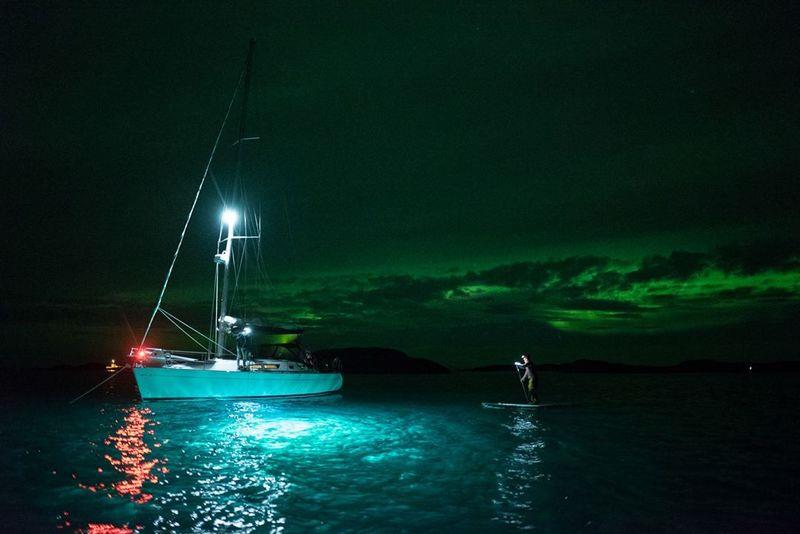
Related Articles
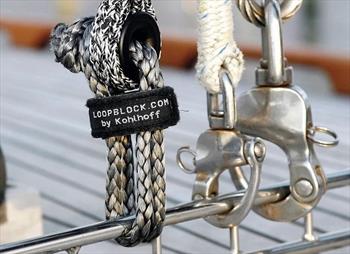
Get your card today

- Pre-paid code

- Buy a Gift Card
Boat Navigation Light Rules and Requirements

Boat navigation lights are one of the most important pieces of safety equipment on your boat, along with personal flotation devices , boat fire extinguishers and boat ventilation systems .
As a boat owner or operator, you are legally responsible for using the correct safety equipment at all times. This is your responsibility whether your boat is moving through the water or you are at anchor, day and night, in all types of weather.
Did you know that boat manufacturers, importers and dealers are not responsible for equipping your boat with legally acceptable navigation lights ? Before you take to the water, check that your navigation lights are:
- the right size and type for your boat and chosen water activity
- the right color and intensity
- attached to the correct parts of your boat
- fully operational.
It’s important to learn all you can about navigation lights for safe, legal boating! Keep reading to find out which lights to use when.
What are navigation lights for?
Navigation lights allow you to see and identify other vessels, and allow other boats to see and identify you. There is not one simple way to use navigation lights; the way they are set up on your boat will indicate the size, activity, and direction of travel of your vessel, so that you and other boat operators can make good decisions and avoid collisions.
By understanding what navigation lights mean, you will be able to safely and legally navigate shared waters under a variety of circumstances.
Boat navigation light requirements
Paddleboats, rowboats and small sailboats generally do not need to display navigation lights, but most other boats are legally required to use some or all of the following:
- A green light to indicate the starboard (starboard sidelight) attached near the bow on the starboard side
- A red light to indicate the port (port sidelight) attached near the bow on the port side
- One or more white lights (stern light and masthead light)
- Other navigation lights , such as blue flashing lights for law enforcement vessels engaged in search-and-rescue (SAR) operations, or yellow lights for vessels that are towing or being towed
Each type of navigation light also has a defined arc of illumination and range of visibility. Angles of visibility must be met when the boat is underway, which means that if your boat rides at a significant bow-up angle, you may need to adjust your navigation lights to compensate.
You must always use navigation lights between sunset and sunrise or in reduced visibility, but there are some exceptions during clear, daytime boating.
Note: It is also important to keep a flashlight on board as a temporary replacement, in case a navigation light burns out.
Boat navigation lights while underway
While your boat is underway, you are legally responsible for displaying the right type of navigation lights. Choosing the right lights depends on several factors, including:
- Whether your boat is powered by an engine (in full or in part)
- The size of your boat , measured in length
- Your boat’s speed
- Where you are boating (inland, international water, etc.)
- Whether you are at anchor.
Remember that your navigation lights must be visible and easily identifiable as such. Other lights on your boat cannot be mistaken for navigation lights, or get in the way of your navigation lights
Sailboat navigation lights
If you are operating a sailboat or nonpowered boat such as a canoe, kayak or rowboat, you still need to use the correct configuration of navigation lights for your boat size and boating circumstances. For comprehensive detailed instructions on navigation lights please refer to the USCG resource. The following are general guidelines:
Sailboats or vessels using paddles or oars, under 23 feet in length:
- One white navigation light (or lantern or flashlight) that is visible from 2 nautical miles away between sunset and sunrise or during periods of low visibility. In the presence of another vessel, the light must be displayed in time to avoid a collision.
Sailboats between 23 and 65.6 feet:
- One white stern light visible at 135 degrees and from 2 nautical miles
- One green starboard and one red port sidelight, visible across 112.5 degrees from one nautical mile away
- A tricolour light, which is a single all-around light which includes the three coloured of lights indicated above, facing the same directions, visible from a distance of 2 nautical miles. This type of light can only be used when under sail, and never when using a motor regardless of whether the sails are hoisted. It may not be used at the same time as regular sidelights.
Powered boat navigation lights
If you are operating a boat with an engine (including sailboats with motors), between sunset and sunrise or under conditions of restricted visibility, you need navigation lights.
Powered boats under 39.4 feet:
- One all-around white light, visible from all directions (360 degrees) from two nautical miles away. This light must be attached at least 39 inches above the sidelights.
Recreational powered boats between 40 feet and 164 feet:
This size of boat requires two white lights which, combined, make up 360 degrees of visibility:
- A white masthead light at the bow, visible across 225 degrees, from 2 nautical miles away. This light must be attached at least 8 feet above the gunnel.
- A white stern light at the stern, visible across 135 degrees and from 2 nautical miles away.
In addition to:
- One green starboard and one red port sidelight, visible across 112.5 degrees from one nautical mile away.

Boat navigation lights at anchor
When your boat is anchored at a dock, it is not necessary to turn on your navigation lights. However, if you are at anchor in an undesignated area, you need to make other boats aware that you are not moving by displaying an all-around white light where it will be easily visible to any other boats in the area.
Diving lights
If you are boating in a resort area or anywhere there are sunken wrecks or coral reefs, keep in mind that there could be diving activity. Keep your distance and stay alert to the possible presence of divers underwater.
Boats that are accompanying divers must display:
- Three vertical masthead lights in a red-white sequence.
Interpreting boat navigation lights
Installing and using the right navigation lights on your boat is very important, but to navigate safely, you also need to be able to interpret the navigation lights on other boats.
Remember, you may not always be boating under ideal circumstances. Make sure you learn to understand navigation lights and the United States Coast Guard rules of navigation , also called the Rules of the Road , thoroughly, so that you can make good decisions quickly, as needed.
Do you see a green light over a white light? This indicates a fishing vessel that is actively trawling. It may be necessary to avoid not only the boat, but also a large net.
Do you see a red light to the left, with two white lights to the right? Understand that you must yield to the other boat.
There are many other configurations you need to be familiar with to operate your boat safely.
Avoiding collisions
Remember, navigation lights are only a tool. You must also maintain a proper look-out at all times, by sight and hearing, to responsibly avoid collisions. Skippers must drive at an appropriate speed so that you can take effective action to avoid colliding with another vessel or body under or on the water.
Factors like visibility, traffic density, the maneuverability of your vessel, the presence of other lights from shore or scattered boat lights, the state of the sea and the draft in relation to the available depth of water must always be taken into consideration. Radar equipment may also pose certain limitations or offer certain benefits to navigating safely.
It is the boat operator’s responsibility to do everything in their power to avoid a collision, including but not limited to the correct display of navigation lights.
Learn about boat navigation and more from Drive A Boat USA!
Driving a boat safely demands a thorough knowledge of navigation, safety procedures and other technical details.
What you need to know depends in part on where you intend to go boating, the size and type of boat you will use, and what type of activity you will be engaged in, but there are many basic rules and regulations that you are legally obliged to follow no matter what the circumstances.
You can get your official state-approved online boating license today! Sign up for our fun and engaging boating safety course to get started.
- USA Boating
Latest Posts
- Guide to Towing and Trailering a Boat
- Complete Boat Safety Equipment Checklist
- How to Launch a Boat: Complete Guide
- Complete Boat Maintenance Checklist
- What Should Be Included on a Float Plan?
- February 2024
- December 2023
- October 2023
- September 2023
- January 2023
- November 2022
- Get certified now
- Replacement California Boater Card

Please verify you are a human
Access to this page has been denied because we believe you are using automation tools to browse the website.
This may happen as a result of the following:
- Javascript is disabled or blocked by an extension (ad blockers for example)
- Your browser does not support cookies
Please make sure that Javascript and cookies are enabled on your browser and that you are not blocking them from loading.
Reference ID: a01c4668-e3be-11ee-88ca-866bdd582601
Powered by PerimeterX , Inc.
Chapter 2: Boating Safety
Navigation light requirements.
Navigation lights are generally mandatory during times of limited visibility regardless of the type of vessel. These lights are invaluable because they allow boaters to identify the type of vessels around them, as well as their relative size. While learning the different arrangements which apply to different vessels, pay close attention to the differences between the navigation light requirements for unpowered and powered vessels.
Navigation Lights for Unpowered Vessels:
If a sailboat is over 23 feet (7 meters), the following standards must be met:
Unpowered boats of this size also have the option of using an all-around light set up, which is also referred to as a tricolor light.
Vessels over 23 feet (7 meters) but under 65.62 feet (20 meters) also have the option of using a combined red over green configuration mast light.
If a sailboat is under 23 feet (7 meters), the following standards must be met:
Navigation Lights for Powered Vessels:
If a powerboat is Greater than 39.4 feet (12 meters), but less than 65.6 feet (20 meters), the following standards must be met:
Additionally, the masthead must be placed at least 8 feet above the gunnel. Refer to Figure D as an example of the proper configuration. These rules also apply to sailboats using a motor.
If a powerboat is less than 39.4 feet (12 meters), the following standards must be met:
Similarly, powered vessels under 7 meters, with speeds under 7 knots, may feature a white all-around light that is visible from two miles away and, if possible, a pair of red and green sidelights in international waters only.
Additionally, the all-around white light must be positioned at least 39 inches above the sidelights. Refer to Figure A as an example of the proper configuration. Note that sailboat in Figure E is using a motor. Even if a sailboat is flying its sail it may still be under engine power, in which case, it is treated as a powered vessel. Therefore, it is vital to note the configuration of a vessel's navigation lights, and what they communicate about the vessel.
If a vessel is at anchor, the following standards must be met:
This covers the sizes of boats typically operated as a recreational boat. For larger vessels, refer to the U.S. Coast Guard Navigational Rules and Regulations Handbook.
Course Signup: Location
Privacy Policy
This privacy policy is intended to provide information to users of Boater's Academy's websites, and users of the services provided by Boater's Academy, about how Boater's Academy uses, stores, and protects information associated with such users. By using any of the websites or services of Boater's Academy, you represent and warrant that you have read and understood this privacy policy, and agree to its terms.
Effective Date Of Policy
The effective date of this privacy policy is 01/01/2018. Boater's Academy reserves the right, at any time and without notice, to add to, update, change, or modify this privacy policy by posting a new version on this page.
Information Collected By Boater's Academy
When you access Boater's Academy websites, Boater's Academy automatically gathers information that most web browsers automatically make available. This information may include IP addresses, Internet domain names, and types of devices and web browsers accessing Boater's Academy websites. Such information is anonymous and is not meant to personally identify you.
Boater's Academy websites also use cookies, which are files that are placed on your computer when you visit Boater's Academy websites. The purpose of cookies includes identifying you as a unique user of Boater's Academy websites and services, tailoring your experience on Boater's Academy websites, and enabling third-parties (such as Google) to optimize and serve advertisements to you.
If you do not wish to have cookies placed on your computer, you have several options, including: (a) not accessing Boater's Academy websites or using Boater's Academy services; (b) setting your web browser to refuse cookies; and (c) opting out of or customizing the use of third-party cookies through various websites operated by such third parties or by others (i.e., Google, Facebook, and Network Advertising Initiative). Please note that blocking or customizing the use of cookies may affect your experience on Boater's Academy websites or with Boater's Academy services.
If you decide to use certain features of Boater's Academy websites or services (such as ordering a product or service), you will be asked to provide certain personally identifiable information, which can include your name, phone number, email address, mailing address, credit/debit card number and expiration date, and social security number. You are under no obligation to provide such information, but refusing to do so may prevent your ability to use certain features of Boater's Academy websites or services.
How Boater's Academy Uses The Information It Collects
With respect to non-personally identifiable information automatically collected from you when you access Boater's Academy websites and information gathered through the use of cookies, Boater's Academy uses such information to: (1) help diagnose problems with our server and administer our websites; (2) track the usage of our websites so we can better understand who is using our websites and services and how they are using them; and (3) share with advertisers to help them better understand our services and the preferences of our customers.
Boater's Academy may combine certain demographic information obtained from you when you use certain features of Boater's Academy websites or services (such as registering or ordering a product or service) with site usage data to provide profiles, in aggregate form, about our users and their preferences. The aggregate, composite information may be shared with our advertisers.
The personally identifiable information you voluntarily provide to Boater's Academy when you decide to use certain features of Boater's Academy websites or services (such as registering or ordering a product or service) may be used for the following purposes: (1) contacting you regarding Boater's Academy's products or services, including those which you have ordered or requested; (2) billing you for the products or services your ordered or requested; (3) providing the information to third parties such as shipping companies, merchant account and payment gateway service providers, governmental entities, and our product and service distributors to the extent necessary to provide the products and services that you order or request; (4) providing the information to those who assist Boater's Academy with providing its products and services; (5) providing the information when required to do so by law or if necessary to protect the property or rights of Boater's Academy, third parties, or the public; (6) providing the information to a successor of Boater's Academy in the event of a merger, acquisition, bankruptcy, or sale of Boater's Academy's assets; and (7) providing the information to consumer credit reporting services, collection agencies, attorneys, and others in the event you fail to pay any amounts owed to Boater's Academy.
In disclosing your personally identifiable information, Boater's Academy will disclose only so much of the information as is necessary to provide the products and services that you request or order.
Security Of Information Provided To Boater's Academy
Boater's Academy takes security seriously and uses commercially reasonable safeguards to protect against the unauthorized access, use, modification, destruction or disclosure of any information you provide to us. However, Boater's Academy cannot guarantee that any information provided to us or obtained by us will not be accessed, hacked, disclosed, altered, or destroyed by unauthorized parties.
Children's Privacy
Boater's Academy does not solicit or knowingly collect personal information from children under the age of 13. If Boater's Academy obtains actual knowledge that it has collected personal information from a child under the age of 13, we will delete such information from our database. Because Boater's Academy does not collect personal information from children under the age of 13, we have no such information to use or disclose to third parties.
Parents of minors of any age may contact our Privacy Coordinator at the mailing address or e-mail address indicated below in order to: (1) access personally identifiable information Boater's Academy has collected from their child; (2) correct or modify such information; (3) request to have such information deleted; and (4) request that we no longer collect or maintain such information.
How To Request Changes To The Personally Identifiable Information We Collect
You can review and request changes to the personally identifiable information that Boater's Academy has collected from you by contacting our Privacy Coordinator at the mailing address or e-mail address indicated below.
Do-Not-Track Disclosure
Boater's Academy does not respond to "Do Not Track" signals sent by browsers.
Consent To Receive Communications
By providing your name, email, mailing address, and/or phone number to Boater's Academy, you consent to receive electronic and other communications from Boater's Academy. You may opt out of receiving electronic communications at any time by: (a) following the unsubscribe instructions contained in each communication; or (b) by contacting our Privacy Coordinator at the mailing address or e-mail address indicated below.
Third-Party Websites
Boater's Academy is not responsible for the content of websites operated by third parties to which it may provide links on Boater's Academy's websites or for the websites of advertisers. Such third parties and advertisers may also have privacy policies that are different from this privacy policy. Therefore, you should inform yourself of the privacy policies and practices of any websites of third parties or advertisers.
Contacting Us
If you have any questions about this privacy policy, Boater's Academy websites, or Boater's Academy products and services, please contact our Privacy Coordinator at the mailing address or e-mail address indicated below:
Boater's Academy Attn: Privacy Coordinator P.O. Box 5143 Virginia Beach, VA 23471 [email protected]
Terms of Use
Introduction
Welcome to Boater's Academy. This website is owned and operated by enLearned LLC. By visiting our website and accessing the information, resources, services, products, and tools we provide, you understand and agree to accept and adhere to the following terms and conditions as stated in this policy (the "User Agreement").
This User Agreement is in effect as of 01/01/2018.
We reserve the right to change this User Agreement from time to time without notice. You acknowledge and agree that it is your responsibility to review this User Agreement periodically to familiarize yourself with any modifications. Your continued use of this site after such modifications will constitute acknowledgment and agreement of the modified terms and conditions.
Responsible Use and Conduct
By visiting our website and accessing the information, resources, services, products, and tools we provide for you, either directly or indirectly (the "Resources"), you agree to use the Resources only for the purposes intended as permitted by (a) the terms of this User Agreement; and (b) applicable laws, regulations and generally accepted online practices and guidelines.
You agree that:
a. In order to access our Resources, you may be required to provide certain information about yourself (such as identification, contact details, payment information, and other information) as part of the registration process, or as part of your ability to use the Resources. You agree that any information you provide will be accurate, correct, and up to date.
b. You are responsible for maintaining the confidentiality of any login information associated with any account you use to access our Resources. Accordingly, you are responsible for all activities that occur under your account(s).
c. Accessing (or attempting to access) any of our Resources by any means other than through the means we provide, is strictly prohibited. You specifically agree not to access (or attempt to access) any of our Resources through any illegal, automated, unethical or unconventional means.
d. Engaging in any activity that disrupts or interferes with our Resources, including the servers and/or networks to which our Resources are located or connected, is strictly prohibited.
e. Attempting to copy, duplicate, reproduce, sell, trade, or resell our Resources is strictly prohibited.
f. You are solely responsible any consequences, losses, or damages that we may directly or indirectly incur or suffer due to any unauthorized activities conducted by you and you may incur criminal or civil liability for such unauthorized activities.
g. We may provide various open communication tools on our website, including but not limited to blog comments, blog posts, public chat, forums, message boards, newsgroups, product ratings and reviews, and various social media services. We do not always pre-screen or monitor the content posted by users of these various communication tools, which means that if you choose to use these tools to submit any type of content to our website, then it is your personal responsibility to use these tools in a legal, responsible and ethical manner. By posting information or otherwise using any open communication tools as mentioned, you agree that you will not upload, post, share, or otherwise distribute any content that:
i. Is illegal, threatening, defamatory, abusive, harassing, degrading, intimidating, fraudulent, deceptive, invasive, racist, or contains any type of suggestive, inappropriate, or explicit language;
ii. Infringes on any trademark, patent, trade secret, copyright, or other proprietary right of any person or entity;
iii. Contains any type of unauthorized or unsolicited advertising;
iv. Impersonates any person or entity, including any Boater's Academy employees or representatives.
We have the right at our sole discretion to remove any content that, we feel in our judgment does not comply with this User Agreement, along with any content that we feel is otherwise offensive, harmful, objectionable, inaccurate, or violates any copyrights or trademarks. We are not responsible for any delay or failure in removing such content. If you post content that we choose to remove, you hereby consent to such removal, and waive any claim against us for such removal.
h. We do not assume any liability for any content posted by you or any other third party users of our website. However, any content posted by you using any open communication tools on our website, provided that it doesn't violate or infringe on any third party copyrights or trademarks, becomes the property of enLearned LLC, and as such, gives us a perpetual, irrevocable, worldwide, royalty-free, exclusive license to reproduce, modify, adapt, translate, publish, publicly display and/or distribute as we see fit. The foregoing only applies to content posted via open communication tools, and does not apply to information that is provided as part of the registration process as part of your use of the Resources.
i. You agree to indemnify and hold harmless enLearned LLC, Boater's Academy, their parent company/companies and affiliates, and their directors, officers, managers, employees, agents, successors, assigns, and licensors (collectively, the "enLearned LLC Parties"), from and against all losses, expenses, damages and costs, including reasonable attorneys' fees, resulting from any violation of this User Agreement or the failure to fulfill any obligations relating to your account incurred by you or any other person using your account. We reserve the right to take over the exclusive defense of any claim for which we are entitled to indemnification under this User Agreement. In such event, you shall provide us with such cooperation as is reasonably requested by us.
Limitation of Warranties
The enLearned LLC Parties expressly disclaim any and all warranties, express or implied, regarding the Resources, arising by operation of law or otherwise, including without limitation any and all implied warranties of merchantability, quality, accuracy, fitness for a particular purpose, non-infringement, no encumbrance, or title, in addition to any warranties arising from a course of dealing, usage, or trade practice.
The Resources are provided with all faults, and the entire risk as to satisfactory quality, performance, accuracy, and effort is with the user.
The enLearned LLC Parties do not warrant that the Resources will fulfill any of your particular purposes or needs, or that the operation or use of the Resources will be uninterrupted or error-free. The enLearned LLC Parties disclaim all implied liability for damages arising out of the furnishing of the Resources pursuant to this User Agreement, including without limitation, mistakes, omissions, interruptions, delays, tortious conduct, errors, representations, or other defects arising out of the failure to the furnish the Resources, whether caused by acts of commission or omission, or any other damage occurring.
Limitation of Liability
In conjunction with the Limitation of Warranties as explained above, you expressly understand and agree that your potential recovery for any claim against the enLearned LLC Parties arising from or relating to the Resources or this User Agreement shall be limited to the amount you paid, if any, for use of products and/or services. The enLearned LLC Parties will not be liable for any direct, indirect, incidental, consequential or exemplary loss or damages which may be incurred by you as a result of using the Resources, or as a result of any changes, data loss or corruption, cancellation, loss of access, or downtime.
Copyrights, Trademarks, and License
Subject to your compliance with this User Agreement, the enLearned LLC Parties grant you a non-exclusive, non-sublicensable, revocable as stated in this User Agreement, non-transferable license to access the Boater's Academy websites, and to use the Resources. The Resources, including any portion of Boater's Academy websites, may not be reproduced, duplicated, copied, modified, sold, resold, distributed, transmitted, or otherwise exploited for any commercial purpose without the prior, express written consent of the enLearned LLC Parties. All rights not expressly granted in this User Agreement are reserved by the enLearned LLC Parties. Without limitation, this User Agreement grants you no rights to the intellectual property of the enLearned LLC Parties or any other party, except as expressly stated in this User Agreement. The license granted in this section is conditioned on your compliance with this User Agreement. Your rights under this section will immediately terminate if you breach, actually or potentially, in the sole judgment of the enLearned LLC Parties, any provision of this User Agreement.
Termination of Use
You agree that we may, at our sole discretion, suspend or terminate your access to all or part of our website and Resources with or without notice and for any reason, including, without limitation, breach of this User Agreement. Any suspected illegal, fraudulent or abusive activity may be grounds for terminating your relationship with Boater's Academy and may be referred to appropriate law enforcement authorities. Upon suspension or termination, your right to use the Resources we provide will immediately cease, and we reserve the right to remove or delete any information that you may have on file with us, including any account or login information.
By using or accessing Boater's Academy websites and the Resources, you represent and warrant that you have read and understood the Privacy Policy, which is incorporated by reference into this User Agreement, and agree to be bound by its terms. The Privacy Policy is available at http://boatersacademy.com/index#privacy .
Dispute Resolution, Governing Law, Attorneys' Fees
This User Agreement shall be governed and construed in accordance with the laws of the Commonwealth of Virginia without regard to its conflict of law principles.
Any and all claims, actions, demands, causes of action, and other proceedings ("Claim" or "Claims") involving you and any of the enLearned LLC Parties arising from or relating to the Resources or this User Agreement shall be heard in a court or courts of competent jurisdiction in Virginia Beach, Virginia. You hereby agree to personal jurisdiction by such courts, and waive any jurisdictional, venue, or inconvenient forum objections to such courts.
You agree that any Claim you bring against any of the enLearned LLC Parties will only be in your individual capacity and not as a plaintiff or class member in any purported class or representative proceeding.
If any of the enLearned LLC Parties initiates a Claim against you arising from or relating to the Resources or this User Agreement, the enLearned LLC Parties will be entitled to recover from you their reasonable costs and attorneys' fees incurred as a result of such Claim. If you initiate a Claim against any of the enLearned LLC Parties arising from or relating to the Resources or this User Agreement, and any of the enLearned LLC Parties prevail on such Claim, the enLearned LLC Parties will be entitled to recover from you their reasonable costs and attorneys' fees incurred as a result of such Claim.
REFUND POLICY
Refunds will only be issued in the event that you are unable to access the Resources through no fault of your own (i.e., due to an outage or other non-functionality of Boater's Academy websites) for a period forty-eight (48) hours commencing with the time that you register and pay for access to the Resources. No refunds will be issued once you receive a Certificate of Completion.
CONTACT INFORMATION
If you have any questions or comments about this User Agreement, you can contact us at:
Boater's Academy P.O. Box 5143 Virginia Beach, VA 23471 [email protected]
- Gift Certificate
- --> Login or Sign Up

Shop by Category
- All LED Replacement Bulbs
- BA15S/BA15D Bayonets (1141/1142/1156)
- BAY15D Indexed Bayonet (1157)
- BA9S Miniature Bayonet
- Edison - Screw-Type
- Festoon (SV8.5)
- Fluorescent Style
- MR11 & MR16
- PAR 36 Sealed-Beams
- Socket Adapters
- Boat Specific LEDs
- All LED Fixtures
- Interior LED Fixtures
- Exterior LED Fixtures
- All Navigation Lights
- Nav Lights By Function
- Economy Series LED Navigation Lights
- USCG Certified Navigation Lights
- LED Retrofit Bulbs for Nav Lights
- Portable LEDs & Flashlights
- All Cruising Necessities
- Comfortable Cruising Accessories
- Wireless Headset Communicators
- Chemicals and Compounds
- All Marine Wind Generators
- MarineKinetix MK4+ Wind Generator
- Wind Generator Installation Accessories
- Spare & Replacement Parts
- Marine Energy Products
- All Wiring & Electrical
- Marine Wire & Accessories
- Power Supplies & Voltage Converters
- LED Dimmers & Switches
- Wireless Remote Controls
- Dusk-to-Dawn Photocells
- 12VDC Device Chargers
- All Cristec / Scheiber OEM
- Cristec Products
- Scheiber Products
- Mantus Anchors
Shop by Brand
- MarineKinetix
- Cruising Solutions
- Sirius Signal
- View all Brands
Navigation Lights

sku: N1-360-CLRB-8
Ip67, uscg 3nm pedestal anchor light.

sku: NSS-USCG
Stainless steel led navigation lamps | uscg / ip67.
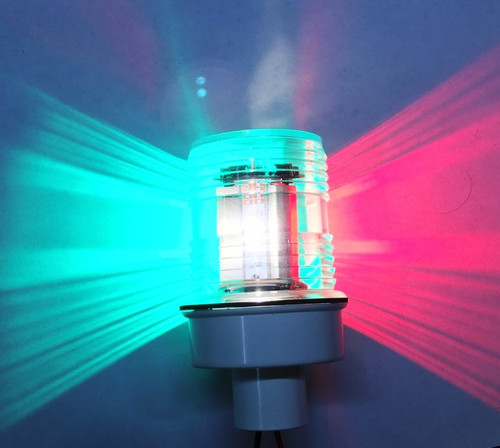
sku: N3-TRI-CMB
Smart led tri-color, anchor light, and strobe.
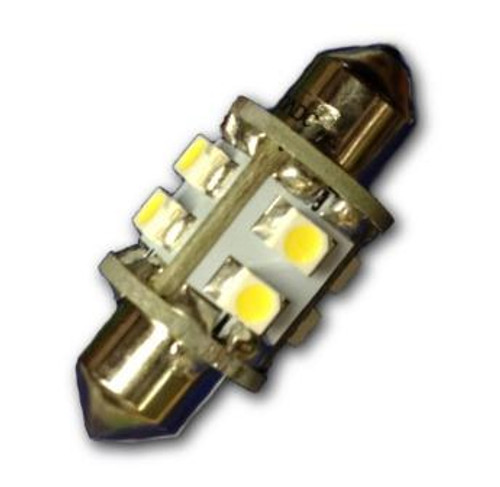
sku: FS-31-08
8-led isotropic 31mm festoon bulb.

sku: TW-1157-SM
Double-contact indexed bay15d 18-led surface mount cluster.

sku: N1-360-CLR
Led all-around anchor light.

sku: TW-GE-13
Compact ge89 and ge90 replacement for attwood & perko.
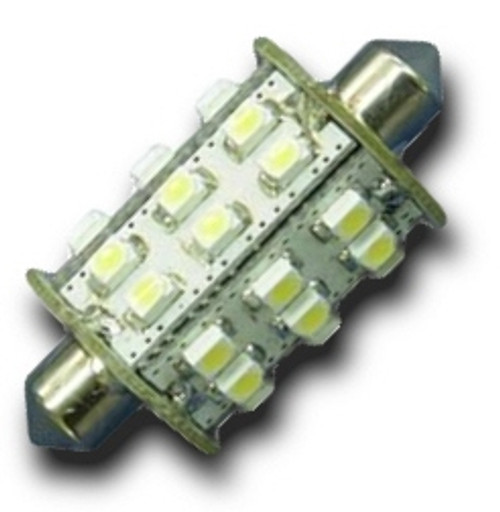
sku: FS-42-30C
30-led 42mm cone end festoon - mini-max (fs-42-30c).

sku: FS-44-30B
30-led 44mm dimple / barrel end festoon for aqua signal navigation lights (fs-44-30b).
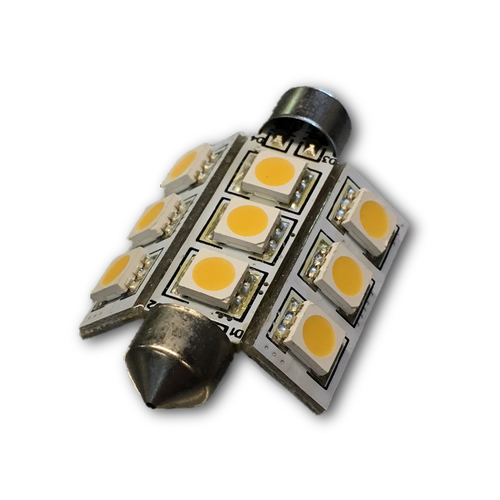
sku: FS-42-09
42mm festoon led 9-led panoramic array.

sku: FS-31-04
4-led, 31mm(1-1/4") festoon bulb (fs-31-04).

sku: TW-TRI-CMB
Led tri-color and anchor light combination bulb.
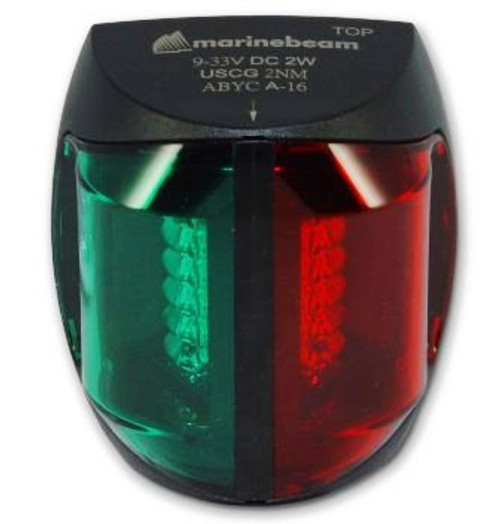
sku: N1-112-RGN
Led bi-color navigation light.

sku: MR16-5W
5w mr16 deck light bulb for hella and forespar (mr16-5w).

sku: BA-WP-36
32-led waterproof bayonet | warm white.

sku: N2-112-PAIR-SE
Shark eye led navigation lights - stainless steel.

sku: N2-112-RGN-SS
Stainless steel bi-color led bow light | horizontal mount.

sku: N3-112-RGNW
Led navigation lights bow mounted bi-color - horizontal mount.

sku: N3-112-PAIRW
Led navigation side lights (pair) 12v/24v - horizontal mount.
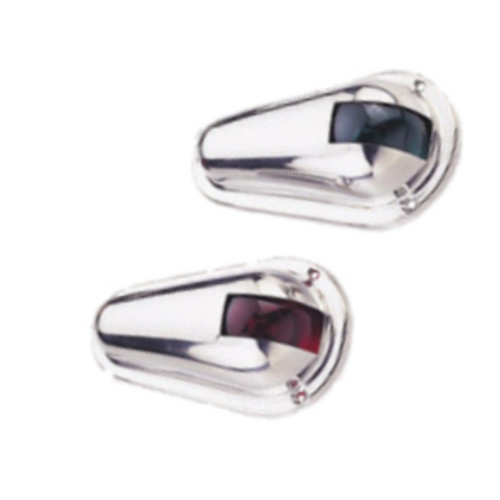
sku: N2-PAIR-SS
Stainless steel port/starboard led running lights (pair).

sku: N1-112
Led port/starboard navigation side lights.

sku: TW-1157-60
Bay15d replacement led bulb for aqua signal series 40, 50 & 55.
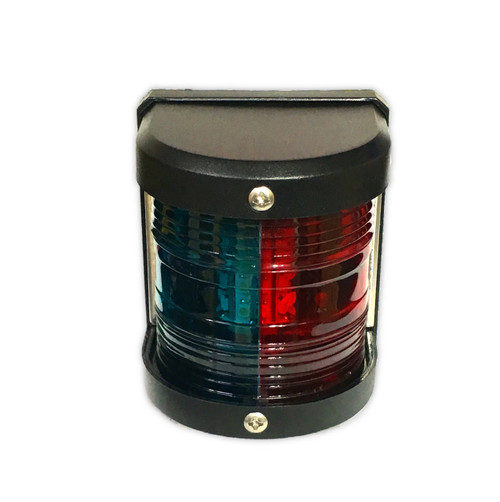
sku: N2-112-RGN-B
Economy series 25 led navigation light - bi-color bow port/starboard.

sku: N2-112-PAIR-B
Economy series 25 - port & starboard led navigation lights.
NavLight™ Series 1 USCG-Certified LED Anchor Light - Now on a Pedestal! This elegant, super bright, and efficient 3NM all-around anchor lamp meets the requirements for vessels up to 50 Meters in length. This lamp has all of the same specifications...
OUR NEWEST NAVIGATION LAMP FOR 2020 - STAINLESS STEEL WITH EASY MOUNTING! If you are looking for an easy and economical LED replacement for your old Aqua Signal or similar navigation light, then this USCG approved LED navigation lamp from...
THIS AMAZING 2-WIRE LED LAMP IS A TRI-COLOR, 360 DEGREE ALL-ROUND ANCHOR LIGHT, AND SOS STROBE IN A SINGLE COMPACT FIXTURE. While this looks like an ordinary anchor light fixture, proprietary LED technology makes it function as a Tri-Mode fixture...
Our new 31mm (1-1/4 inch) cone-end LED festoon is a great solution for replacing up to 10W 31mm festoon bulbs in Attwood and Perko anchor light fixtures. This bulb has a true constant-current circuit, so it can operate from 10VDC to 30VDC (12VDC or...
LED Replacement for BAY15d Indexed Bayonet Bulbs used in Navigation and Anchor Lights. This bulb uses 18 triple-emitter surface mount (SMD) LEDs arrayed in 5 planes for 360° visibility. It draws only 3W (0.25A at 12V), yet vastly outperforms an...
NavLight™ Series 1 USCG-Certified LED Anchor Light. This elegant, super bright, and efficient 3NM all-around anchor lamp meets the requirements for vessels up to 50 Meters in length. This lamp is simple to install on the mast-top with the...
LEDs: (13) 2835 emitters Input Voltage: 10 - 30VDC (Integrated Constant Current IC) Wattage: 1.9 Watts Amperage: 0.16A at 12VDC Beam Angle: 360° Color Temperature: 2,900°K (Warm White), 6,000°K (Cool...
THE WORLD'S BRIGHTEST 42MM CONE-END LED FESTOON This cone-end LED Festoon replaces Perko 0070DP1CLR (Fig. 70), Forespar (WN-211), Hella, and other 42mm (1-5/8" or 1-11/16") through 44mm cone-end festoons in anchor lights, steaming lights and navigation...
This LED festoon bulb features 30 super-bright mini-SMD LEDs. It uses the latest technology, giving the highest output per watt. Used as an anchor light, it is substantially brighter than the 10W incandescent it replaces. This is a drop-in...
This 9-LED bulb produces a true 180° beam pattern! Perfect for replacing festoons in overhead dome type fixtures, as well as in stern lights and steaming lights that use a 42mm cone-end SV8.5 type bulb. It has 9 high-output 5050...
31mm (1-1/4 inch) LED SV8.5 Festoon - perfect for replacing incandescent festoons up to 10W used in many courtesy lights and Perko fixtures. Replaces foot lights found on newer boats from Beneteau and other builders. Fits Perko 1100 Fig. 71 Port and...
This bulb converts your ordinary anchor light into a Tri-Color and Anchor Light combination navigation light - read on to see how we do it. Marinebeam and its French partner MarineLED have been working on this concept for several years, and this...
Marinebeam's USCG Certified LED NavLight™ Series 1 Bi-Color. Tired of changing bulbs and fixtures at the bow due to moisture, corrosion or wimpy output? This super-bright, sealed-for-life nav light is strong, IP-67 submersion-proof, and...
Replacement LED deck light bulb for Hella deck lights and combination deck/masthead steaming lights 998505001 . Replaces the 20W halogen GX5.3 MR16 bulb found in the Hella 8505 Series lights (bulb # 8GH-998-529001). For the Forespar ML-2 and ML-1...
LEDs: (36) 3018 emitters Input Voltage: 10 - 30VDC (Integrated Constant-Current IC) Wattage: 3 Watts Amperage: 0.25A at 12VDC Beam Angle: 360° Isotropic Color Temperature: 3,000°K (Warm White) LED Package...
IP65 304 Stainless Steel Shark Eye Running Lights w/ Gasket An affordable, stainless steel LED replacement for standard shark eye style navigation lights. Featuring color coordinated LEDs, this fixture has user replaceable bulbs that will be brighter...
AN UNBELIEVABLE DEAL FOR OUR STAINLESS STEEL 12V LED NAVIGATION LIGHT. This is our version of a very common type small boat bi-color navigation light. An LED navigation light fixture that is an easy replacement for many of the more expensive and...
Bi-Color LED Navigation Light 10-30VDC Horizontal Mount 2NM Our Marinebeam red/green running light is USCG certified for sail or power driven vessels up to 20M (65'). This IP67 LED lamp is fully-waterproof, high-output, and impact resistant. It mounts...
One pair of Marinebeam 12V/24V horizontal-mount 2NM LED navigation side lights (1 Port Side Red & 1 Starboard Side Green). Marinebeam LED running lights are USCG certified for sail or power driven vessels up to 20M (65') - suitable for OEM use...
Stainless Steel Sideboard LED Running Lights - Port and Starboard (Pair). These economical LED navigation lights are made completely of stainless steel, with a polished outer finish. Sleek tear-drop shape and low-profile give a classic...
Marinebeam's USCG Certified NavLight™ LED side light Marinebeam LED Sidelights are typically used in pairs, but they are sold separately. These 112.5° LED sidelights replace traditional red and green sideboard lights which are mounted on the...
LEDs: (60) 2835 emitters Input Voltage: 10 - 30VDC (Integrated Constant Current IC) Wattage: 5.2 Watts Amperage: 0.44A at 12VDC Beam Angle: 360° Color Temperature: 2,900°K (Warm White), 6,000°K (Cool...
Economy LED Bi-Color Bow-Mounted Navigation Running Light - Series 25 Style Our customers asked for a Series 25 type bow-mount bi-color LED running light to replace their existing sun-ravaged and crumbling factory-fit Aqua Signal navigation lights. They...
Economy LED Side Navigation Lights. Pair (Port & Starboard) - Series 25 Style Priced per pair (Port & Starboard) Replace your tired old fixtures with super-bright and efficient LEDs. Our customers asked for a suitable replacement for...

Open to the Public!

- Boat Lights
Boat Navigation Lights

Portable LED Boat Bow Navigation Light w/ Suction Cup
Innovative Lighting Portable LED Boat Bow Navigation Light w/ Suction Cup This Portable LED Boat Bow Navigation Light w/ Suction Cup features molded brass threaded mounting bushings with shock resistant neoprene accents. Rated at 100,00 hours LED...
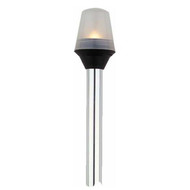
Attwood Frosted Globe All-Round Boat Navigation Light
Attwood Frosted Globe All-Round Boat Navigation Light This Attwood Frosted Globe All-Round Boat Navigation Light uses a standardized lamp that is commonly available in marine, auto, and convenience stores. It provides a 2-mile 360 degree...

Portable Clamp-On Boat Bow and Stern Lights
Attwood Portable Clamp-On Boat Bow and Stern Lights The Attwood Portable Clamp-On Boat Bow and Stern Lights feature a water-resistant, shatterproof polycarbonate lens. They are composed of shock-proof composite housing and have durable, portable LED...

Perko 36" All-Round Boat Navigation Light
Perko 36" All-Round Boat Navigation Light This Perko All-Round Boat Navigation Light helps preserve night vision and provides a reduced glare. With a black polymer top and collars, the amount of light wasted outside of the visibility zone is...

Portable LED Boat Bow Navigation Light For Inflatable
Innovative Lighting Portable LED Boat Bow Navigation Light For Inflatable This Portable LED Boat Bow Navigation Light For Inflatable uses 90% less energy than incandescent bulbs. It is fully buoyant and features shock resistant neoprene accents and...

Attwood Stainless Steel LED Boat Side Light
Attwood Stainless Steel LED Boat Side Light This Attwood Stainless Steel LED Boat Side Light uses LED technology, making it more efficient than standard incandescent bulbs. It keeps the light cooler and draws less power making it a top choice among...

Attwood Bi-Color Boat Navigation Light
Attwood Bi-Color Boat Navigation Light This Attwood Bi-Color Boat Navigation Light is composed of anodized aluminum that raises the light head for visibility above the trolling motor, anchor, or other equipment on the bow. The 14" straight 2-pin...

Stainless Steel Deck Mount LED Navigation Lights
Stainless Steel Deck Mount LED Navigation Sidelights Innovative Lighting's Stainless Steel Deck Mount LED Navigation Sidelights feature long-lasting LED lights that offer 50,000 hours of service light with a low energy draw. Each sidelight has a...
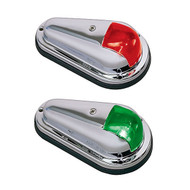
Perko Vertical Mount Boat Navigation Side Lights
Perko Stainless Steel Vertical Mount Boat Navigation Side Lights These Perko Vertical Mount Boat Navigation Side Lights are certified for use on sail or power driven vessels under 12 meters (39.4 ft) in length. They feature both red and green...
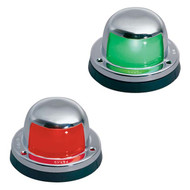
Perko Stainless Steel Boat Side Lights
Perko Stainless Steel Boat Side Lights These Perko Stainless Steel Boat Side Lights feature a black plastic base and a stainless steel top. Sold in pairs, they come with one Starboard (Green) light and one Port (Red) light. They also include a...
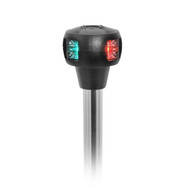
Attwood Bi-Color LED Boat Side Light
Attwood Bi-Color LED Boat Side Light This Attwood Bi-Color LED Boat Side Light features an anodized pole that raises the light head above the trolling motor, anchor or other equipment mounted to the bow. Being completely sealed and...
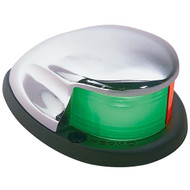
Perko Bi-Color Slant Boat Bow Light w/ Deck Mount
Perko Bi-Color Slant Boat Bow Light w/ Deck Mount This Perko Bi-Color Boat Bow Light w/ Deck Mount features a chrome plated zinc alloy top with a polymer base. It offers one mile of light visibility between 0° - 20° declination as well as a...

Attwood Vertical Boat Transom Navigation Light w/ Flush Mount
Attwood Vertical Boat Transom Navigation Light w/ Flush Mount This Attwood Vertical Boat Transom Navigation Light w/ Flush Mount features a translucent body made up of 304 stainless steel with a plastic body and watertight lamp socket. It provides...

Perko Combo Masthead Boat Navigation Light
Perko Combo Masthead Boat Navigation Light This Perko Combo Masthead Boat Navigation Light features a reduced glare design with a chrome plated Zinc Alloy top. It is certified to be used on sail or power driven vessels under 20 meters (65.6 ft) in...

Attwood Anchor Masthead Boat Navigation Light
Attwood Anchor Masthead Boat Navigation Light - Horizontal Mount This Attwood Anchor Masthead Boat Navigation Light features an easy to grasp cam-lock that stays locked in normal conditions. The cam-lock releases in extreme conditions and allows...

Stainless Steel LED Bi-Color Boat Bow Navigation Light
Innovative Lighting Stainless Steel LED Bi-Color Boat Bow Navigation Light This Stainless Steel LED Bi-Color Boat Bow Navigation Light features polished stainless steel housing with a transparent lens that is cool to the touch. With a 6 LED light...

Attwood Bi-Color LED Boat Bow Light
Attwood Bi-Color LED Boat Bow Light This Attwood Bi-Color LED Boat Bow Light is built to last in even the most extreme saltwater environments with its corrosion resistant design, and reverse polarity protection. With high-quality electro-polished...
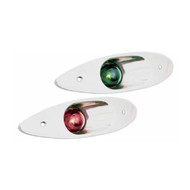
Sea Dog Flush Mount Boat Navigation Side Lights
Sea Dog Flush Mount Boat Navigation Side Lights These Sea Dog Flush Mount Boat Navigation Side Lights are composed of stamped 304 stainless steel that is approved for USCG 1 NM (A-16). They install with four #8 RH fasteners. (Not Included) Sold in...

Portable LED Boat Bow Navigation Light w/ C-Clamp
Innovative Lighting Portable LED Boat Bow Navigation Light w/ C-Clamp This Portable LED Boat Bow Navigation Light w/ C-Clamp is fully buoyant and rated at 100,000 hours of LED service life. Constructed of a molded one piece white body construction...

Perko "Classic" Combination Boat Bow Navigation Light
Perko "Classic" Combination Boat Bow Navigation Light This Perko "Classic" Combination Boat Bow Navigation Light features chrome plated zinc alloy with a flag staff socket. It comes with a Starboard (green) and Port (Red) light with red/green...
Boat Navigation Lights: Safety with the flick of a switch
When visibility on the water is low, ensure that you have the right marine navigation lights installed from Wholesale Marine. From yachts, to cruisers, small boats, PWC's or even kayaks we offer a variety of portable navigation lights.
Boat stern lights offer a bright white light for visibility on the water. Stern lights come in a variety of mounting options, the two most common are a mounted fixed light or a drop in light on a pole. Boat side lights come in a starboard side (green) and port side (red) light. You can mount a separate light on either side or use a bi-color light that contains both. If your vessel meets the requirements you can always use a tri-color light that combines both stern and side lights.
The size of your vessel determines the United State Coast Guard navigation light requirements you must meet. The requirements are for either a main masthead or sternlight head with a pair of side lights. The lights are required to meet a certain nautical distance shine from dead ahead.
Boats that are less than 39.4’ (12 meters) require sidelights with visibility up to 1 nautical miles and a white stern light up to 2 nautical miles.
Boats that are less than 65.7’ (20 meters) require sidelights with visibility up to 2 nautical miles and a masthead light up to 3 nautical miles.
Boats over 65.7' and less than 164' (20 meters - 50 meters) require sidelights with visibility up to 2 nautical miles and a masthead light up to 5 nautical miles.
Whether you’re searching for bow lights or side lights, Wholesale Marine stocks trusted marine brands including Attwood , Perko Marine , and Innovative Lighting . Find reliable boat navigation lights for every type of water vessel.
Marine Navigation Lights That Meet Requirements
Whether you’re piloting a small fishing boat or large power boat, trust that Wholesale Marine has the right boat navigation lights for you. As you are equipping your boat, it is important to be mindful of navigation light requirements for your style of boat. Power driven vessels are required to have a stern light , and either a pair of side lights or a bow light.
Perko Marine side lights such as the Perko Vertical Mount Side Light are equipped with a red and green marine navigation lights. Gold plated contacts provide excellent conductivity while holding up against normal wear.
Depending on your application, you may opt-out of boat side lights in favor of a bi-color deck light. Bi-color deck lights like the Attwood Bi-Color Boat Navigation Light , function the same as a side light, but features red and green lights contained in a single unit. This bi-color dual side light offers a universal fit, sitting on a 14” straight 2-pin locking collar pole.

Increase your visibility on the water with the Attwood LED All-Round Boat Stern Light . This boat stern light offers bright white light and is designed for 360° visibility on boats up to 39.4' in length. This marine navigation light is one of many that we stock that is US Coast Guard Approved for 2 nautical miles.
When your boat is anchored you are required to use a 360° anchor light that is visible up to 2 nautical miles. A perfect choice is the Attwood LED Anchor light . Constructed from enhanced 316 stainless steel and corrosion resistant alloys, this navigation light is designed to hold up. The powerful LED’s are rated for over 50,000 hours of use and produce a light bright enough to be seen up to 3 nautical miles away.
For ease of operation, we recommend Innovative Lighting’s Portable LED Stern Navigation Light . It features a suction cup mount that attaches virtually anywhere and its rugged construction is able to withstand even tough marine environments. Many of our portable navigation lights for boats use LED bulbs, which consume less power and have a longer service life than regular incandescent or halogen bulbs.
Choosing the Right Navigation Lights
Trying to decide between different boat light options? Our customer service team is composed of boat enthusiasts that are eager to offer real-world advice on the boat navigation lights. We would be more than happy to help you get the light best suited for your boat and boating activities. We’re here for you Monday through Friday from 9:00 AM until 6:00 PM EST at (877) 388-2628.
Oops, something went wrong. Please try again.
You are now logged in!

Best LED Navigation Lights

Last Updated by
Daniel Wade
May 3, 2023
Key Takeaways
- Navigation lights offer safety to you and other boaters
- You must understand how boat navigation lights rules are important
- Bow light and stern light are red and green respectively
- Pontoon boat navigation lights are similar to other marine navigation lights and their use
- The best boat navigation lights will vary based on a variety of factors to you
Boating at night requires proper lighting in order to ensure safe travels. So what are some of the best LED navigation lights?
Brands such as Shangyuan, Linkstyle, Partsam, and Obcursco make high quality LED boat navigation lights. Each brand will have a variety of factors that make them the best LED boat navigation lights such as price, quality of materials, and a super bright light.
In my years of experience some brands are definitely better than others. Price appears to be a driving factor but keep in mind what the boat lights intended use is for and how it applies to your situation.
Table of contents
The Top 12 Best LED Boat Navigation Lights
Using LED boat lights is a smart choice for those who frequently sail or engage in open water activities. These are especially needed to obtain sufficient lighting for both the interior and exterior of their boat during night or dawn trips.
Partsam LED Lights

The Partsam round chrome light is a waterproof LED boat navigation light that doubles as an interior boat cabin light. It is made from top chrome bezel and high-grade plastic that make it durable and lightweight.
It comes with mounting screws and is easy to install with its flush mount. It is also compatible with 12 volt DC power.
- Waterproof and durable against all elements
- Can be used in both interior or exterior of your boat
- Installation is easy and it is super bright
- Not meant to be submerged especially in salt water
- Cannot dim the lights
Shangyuan Boat Navigation Lights LED Strip

The Shangyuan LED boat running lights are versatile and reliable for use all over the boat. These are especially used for:
- Stern lights
- Starboard and port sides
These LED boat navigation lights are ideal for small boats, kayaks, pontoons, and sailboats. The 3.8-inch LED strips are green for the starboard side and red for the port side. They meet maritime requirements and are battery-powered.
These running lights can withstand harsh marine conditions and provide exceptional brightness and performance. The slim ABS casing needs careful screw tightening to avoid cracking. They are easy to install and durable even in harsh environments during hunting and winter seasons.
- Be seen on the water with proper navigation lights
- Energy efficient
- Overtightening the screw can damage light casing
- Meant for small boats
Obcursco LED Navigation Lights Kit
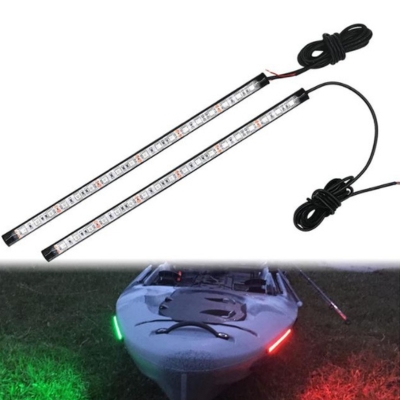
Obcursco makes a great boat navigation light kit. This LED navigation light is perfect for low light settings and rough weather with a 12v DC power and IP67 waterproof rating.
It is corrosion-resistant and impact-proof thanks to the ABS material while tightly sealed LEDs ensure full waterproofing. With easy installation using 3M adhesive it is a versatile option for boats and land use alike.
- Easy to adjust lights
- Waterproof and has durable materials
- Easy to install
- Might need to glue the lights in addition to the 3M tape
- Does not include instructions
Linkstyle Marine Boat Navigation Lights

Linkstyle's marine LED boat navigation lights are a durable and versatile option for various boat types. Its corrosion-resistant design features waterproof red and green LED units, an ABS plastic casing with a stainless steel enclosure, and polycarbonate-lenses lamps.
The lightweight and easy-to-install design is ideal for hunting and fishing. The 225-degree mounting angle ensures maximum luminance and safety compliance. These IP65 waterproof safety lamps use 16 LED bulbs powered by a 12V battery to widen visibility during reduced visibility conditions.
- Lightweight and durable to outdoor marine conditions
- Easy installation
- Ideal for smaller boats
- Installing wrong may cause navigation issues
- Not meant for larger boats
OPT7 Aura PRO LED Kit

The OPT7 Marine LED Kit is for hassle-free and waterproof boat lighting. It features SoundSync bass-activated technology, a handheld remote, and one-touch color selection with advanced dimming options.
The kit contains four LED strips, connectors, extension wires, power harness, mounting kit, and other accessories. This beats looking for everything individually but the price point might deter some buyers wanting a simple setup.
- Super bright lighting
- Easy to install and plug into 12 volt power
- Comes with remote and various light features
- Remote is not the best quality
- Might be overpriced for those wanting a simpler LED kit
Interwebz Boat Bow Navigation

Interwebz has waterproof LED bow navigation lights in red and green for boats that can be connected to a 12-volt battery or a standard pole. Proper labeling is required for night trips.
It has stylish mounting options for the boat's rub rail with a black cover that blends in with the exterior surfaces. Suitable for various boats such as bass, ski, and fishing boats, the lights are weatherproof with an IP68 rated silicone casing.
- Easily seen lighting
- Has six foot cord to connect anywhere on the boat
- Great weatherproof rating
- Likely have to use marine grade silicone to keep it secure
PryEU Daylight White

The PryEU Daylight White 6000K is an energy-efficient and versatile waterproof lighting fixture that uses 3M double-sided foam tape for secure attachment. It has a 12v DC voltage compatibility and consumes only 1.5 watts and makes it ideal for marine interiors and other spaces.
Installation is easy but it involves surface cleaning and sticking it to the adhesive backing. A three year warranty plus 60 days replacement and fast delivery with customer support are provided by the manufacturer.
- Excellent energy efficiency
- Solid waterproof rating
- Easy to install and has three year warranty
- Might need silicone to help make it stay
- Lights cannot be dimmed
Amzonly LED Navigation Lights
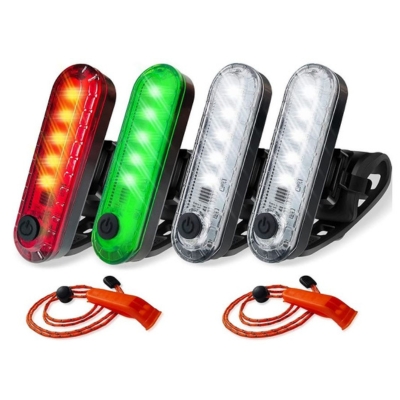
AMZONLY LED boat navigation lights are a versatile and top-rated kit with red and green LEDs for the bow and port side and white for the stern. They have three flashing modes and a magnetized screwdriver for easy battery changes.
This IPX5 weather-resistant light kit comes with four LEDs, 12 3-volt batteries, three elastic straps, one long armband, and a 12-month return policy. This is suitable for kayaks, yachts, motorboats, and pontoons and they can be used as a flush mount navigation light, masthead light, taillight, running light, or flashing light.
- Easy to install kit with everything you need
- One year return policy
- Solid waterproof and weatherproof capabilities
- Not intended to be submerged or soaked
Leaningtech LED Boat Navigation Lights

The LEANINGTECH Marine LED is a waterproof and adaptable lighting choice for boats that is known for its brightness, energy efficiency, and USCG compliance. Its durable construction from ABS plastic and chrome plaid zinc ensures both lightweight and waterproof properties with an IP65 rating.
It can serve various purposes that as a source of lighting for different types of boats. It can also serve as a bow, running, or stern light.
- Great brightness
- Easy to install and is made from quality materials
- Has multiple functions for use
- Gauge for wires is a bit small
- Some reports say it did not hold up well in salt water conditions
Osinmax Boat Navigation Light
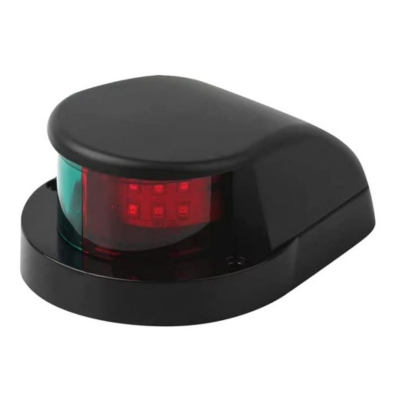
The Osinmax LED boat navigation lights is a top-rated energy-saving set that uses a 3W LED bulb and 12V DC power. With green and red lenses it offers masthead-like running lights that ensure you will be seen up to two miles.
The housing is waterproof with an IP67 high-density seal ring made of foam silicone rubber that helps prevent short circuits from splashes. The lights comply with maritime navigation, wildlife, and fisheries regulations, and install easily with one screw.
- Low power consumption and is super bright
- Designed to keep water out
- Can be used as courtesy lights
- Might need to add silicone to adhere the back side
- Might be difficult to install on some boats
Lumitec SeaBlazeX Boat Navigation Lights

To attain premium illumination you should opt for the Lumitec SeaBlazeX LED with 12-24V DC power that emits 4,000 lumens. Its marine-grade bronze housing enables convenient flat surface installation.
It offers versatile programmable features such as cross-fade and strobe. Perfect for subaquatic use, preventing discoloration, it is available in blue, green, white, and white/blue hues.
- Durable in salt water conditions
- Solid underwater submersion capabilities
- Bright lights in various colors
- Cannot dim lights
- Somewhat expensive compared to similar brands
Five Oceans Boat Navigation Lights

Boaters prefer Five Oceans' marine LED boat navigation lights for clear visibility up to two miles. These dual-function green and red lights serve as stern, flushing, and bow lights.
They are made of lightweight ABS plastic and alloy covers.They are also brighter and longer-lasting compared to other boat navigation lights.
These low-tension safety lights connect to a 12V power source for energy efficiency and superior visibility. With a UV-resistant feature and a lifespan of about 50,000 hours they are top choice. No additional sealing is required thanks to their rubber seal.
- IP66 protection and endure splashes
- Easily install the 3W bi-color LEDs at a 225-degree angle using the included screws
- Bright boat navigation lights that can be seen two miles away
- Does not look as appealing as other boat navigation lights
What to Expect from LED Boat Navigation Lights
To simplify your selection process when looking for LED lighting fixtures to accessorize, you will need to research a variety of factors based on your needs. If you wish to upgrade or replace your boat navigation lights here are some key factors to consider.
Lighting Capability
LED lights have evolved to meet diverse lighting needs with some producing clear white light and others providing brightness from any direction. Lumens is the term used to describe the amount of light generated by a particular brand of LED lights.
Angle of the Lights
To avoid eye damage it is crucial to factor in the beam angle when purchasing LED boat lights. Read reviews from past customers to gauge the intensity of the light directed at you or from an angle. Strong LED lighting fixtures can harm your eyes so be cautious.
Energy Efficiency
Comparing the percentage of energy needed to produce sufficient light is crucial when selecting lighting fixtures such as LED lights. Higher lumens per watt make LED lights more cost-effective in terms of energy consumption.
Red Light Output
Excessive heat generation in boat LED lights is a significant concern for buyers. To ensure optimal lighting quality it is crucial to consider the heat output of the chosen LED light.
Ease of Installation
Multiple installation techniques for navigation lights cater to different boating needs but mount components should be ensured for both wired and battery-operated choices. Mounting options range from screws to armbands.
Wired lights are recommended for safety while small boats can benefit from the versatility of battery-operated LED lights. The chosen installation method impacts functionality, service life, and safety, ultimately safeguarding lives and property.
LED light prices will vary depending on select features such as materials used and the manufacturer's design availability. Choosing a manufacturer depends on the buyer's budget and preferences for the intended use of the boating adventure.
Customized features and extended warranty may result in higher prices. To obtain the finest LED light bargain you should scrutinize LED boat lighting warranties that typically span from one to seven years. Do not settle for one that is the cheapest option since it might not suit your intended use or last as long as you may hope.
Quality Materials
To ensure the longevity of LED lights it is crucial for prospective buyers to consider the material used. If the material is prone to rust then the light will eventually corrode.
Always check the manufacturer's material-composition and avoid products made primarily of alloy coating. You should for opt for a top-grade metal or alloy material from a reputable LED light brand.
Your lighting source must be tightly sealed and capable of withstanding harsh weather and moisture. When using LED lights for marine and saltwater expeditions, verify the IP rating.
Look for an IP67 rated LED product. This means it confirms its ability to endure any weather conditions and even some underwater submersion.
Why You Need LED Boat Navigation Lights
LED navigation lights offer numerous benefits. They primarily are designed to allow safe transport on the waterways so that other boats can see you.
Choose quality LED lights for greater energy efficiency and significant cost savings compared to incandescent bulbs. LED lights have diverse uses on land and sea, being useful for lighting homes, businesses, and buildings.
Marine LED cabin lights have become popular as decorative lighting inside homes, while others use LEDs for entertainment, transportation, spotlighting, or reading. LEDs are considered essential lighting tools in any setting.
Other reasons to have efficient ones include:
- Easy installation and durable marine-grade construction
- Versatile performance options based on different brands
- Improved visibility for boat status and navigation
- Helps prevent accidents caused by extreme weather and reduced visibility
- Retain compliance with wildlife and marine laws
- Multiple usage options in other marine applications
Differences in LED Boat Navigation Lights
The boat light packaging is compact upon delivery and LED lights operate similarly to incandescent bulbs. They are initially designed for lighting boats but a lot of these lights now serve multiple purposes and come in various types.
- Navigation: Are essential for indicating the position and direction of sea vessels. Usually with red and green lights in addition to white.
- Anchor: The anchor light serves to locate and signal the presence of a docked vessel
- White: Provides adequate lighting all around the boat
- Deck: These lights offer lighting in areas that you walk through often
- Dock: Serve as bright illumination for boaters or mariners during departure or arrival at a marina
- Underwater: These are submerged or placed near water to lure sea creatures during nighttime fishing expeditions.
- Search: Search lights are essential for boat users to locate objects on deck or in water.
Which Colors Do You Need for Your Boat?
Boat navigation lights consist of red sidelight for port side and green sidelight for starboard side. White lights serve as anchor, masthead, or stern lights.
If you cannot remember how to tell the two apart you can always think of port red wine. There is a saying that you can easily remember such as “there is no red port wine left”. This way you do not have to worry about the starboard side since it works itself out in the phrase if you can remember the port side.
Navigation lights are unnecessary for illumination during normal boat motion except in low visibility conditions. If you decide to use other lights on your boat make sure that they are not in use during lower light conditions so that other boaters are not confused by your setup.
Related Articles
I've personally had thousands of questions about sailing and sailboats over the years. As I learn and experience sailing, and the community, I share the answers that work and make sense to me, here on Life of Sailing.
by this author
Most Recent
Important Legal Info
Lifeofsailing.com is a participant in the Amazon Services LLC Associates Program, an affiliate advertising program designed to provide a means for sites to earn advertising fees by advertising and linking to Amazon. This site also participates in other affiliate programs and is compensated for referring traffic and business to these companies.
Similar Posts
Popular posts.

Best Liveaboard Catamaran Sailboats
December 28, 2023

Can a Novice Sail Around the World?
Elizabeth O'Malley
June 15, 2022

4 Best Electric Outboard Motors

How Long Did It Take The Vikings To Sail To England?

10 Best Sailboat Brands (And Why)
December 20, 2023

7 Best Places To Liveaboard A Sailboat
Get the best sailing content.
Top Rated Posts
Lifeofsailing.com is a participant in the Amazon Services LLC Associates Program, an affiliate advertising program designed to provide a means for sites to earn advertising fees by advertising and linking to Amazon. This site also participates in other affiliate programs and is compensated for referring traffic and business to these companies. (866) 342-SAIL
© 2024 Life of Sailing Email: [email protected] Address: 11816 Inwood Rd #3024 Dallas, TX 75244 Disclaimer Privacy Policy
The Tula Shop
- Tula’s Crew 🏴☠️
- Boat Finances
- Tips and Tricks
- Experiences and Opinions
- Traveling with a Dog
- Marina Reviews
- The Captain and Crew
- Mountain Myst Is For Sale
Recommended Gear
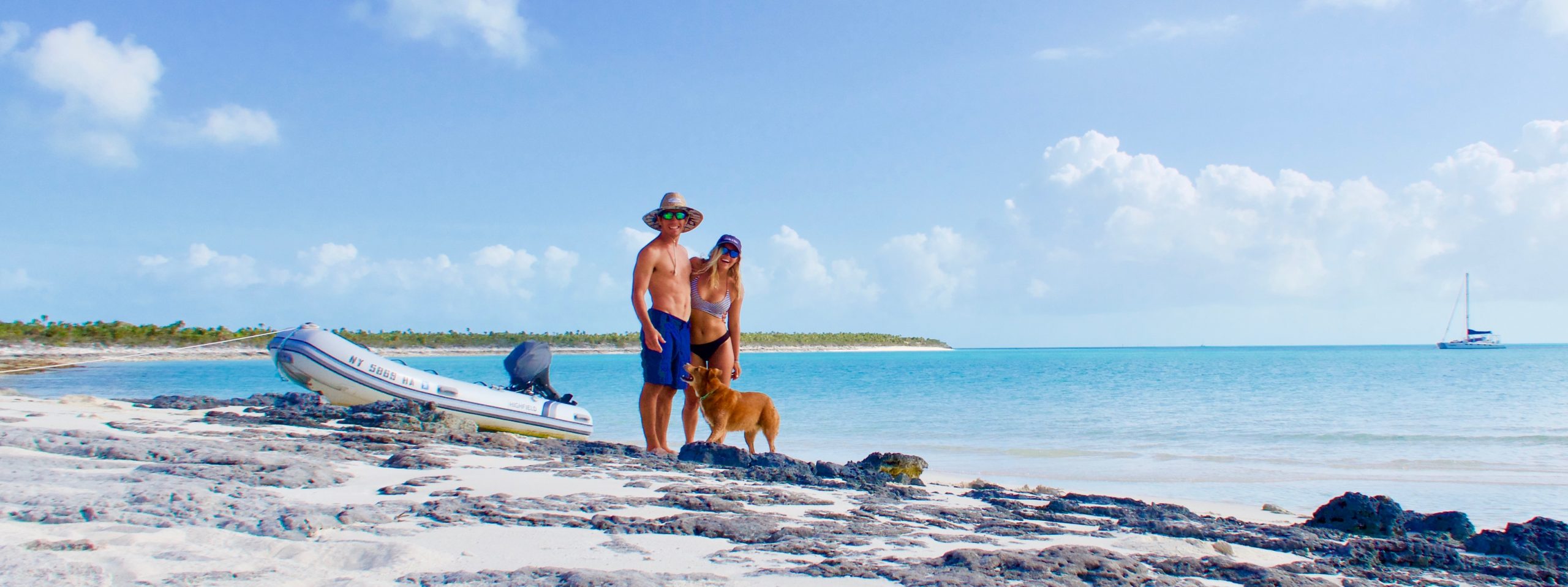
Whatever floats your boat, we have something for you in the Tula shop!
Subscribe to our Channel!
We make videos to show you what boat life is all about! Follow along to see the work that it takes and the amazing rewards of living on the water!
Join Our Crew
Joining us on Patreon means you pledge to support our videos. That pledge can be $1, $5, or whatever you feel the videos are worth to you. In return, you get early released videos, discounts to the Tula shop, and much more :)
We have been known to use and abuse things. Check out the gear that has lived up to our crazy lifestyle and that we would recommend in a heartbeat.
Fan Favorites!
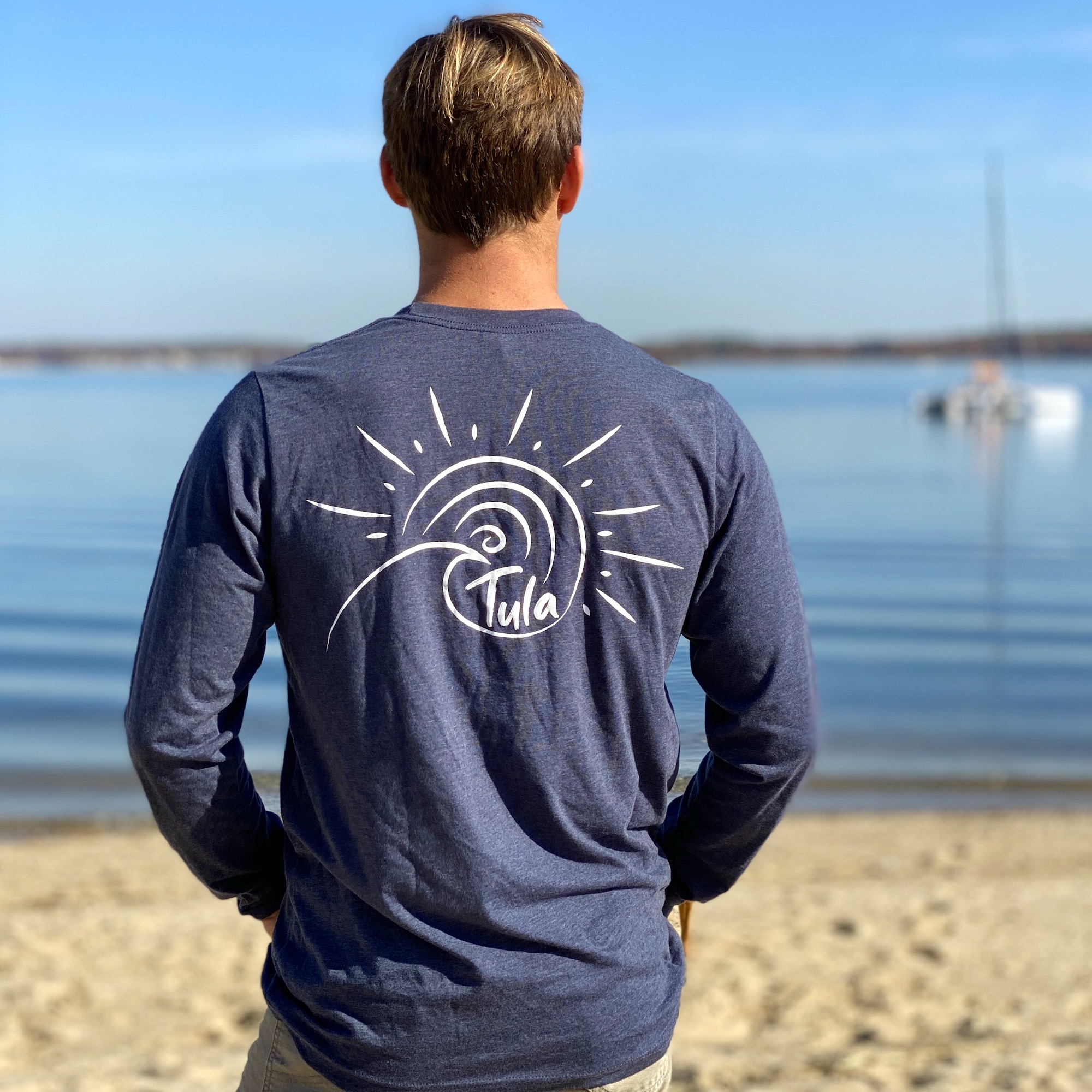
Tula Wave Long Sleeve tee
The most comfortable long sleeve you will ever own!
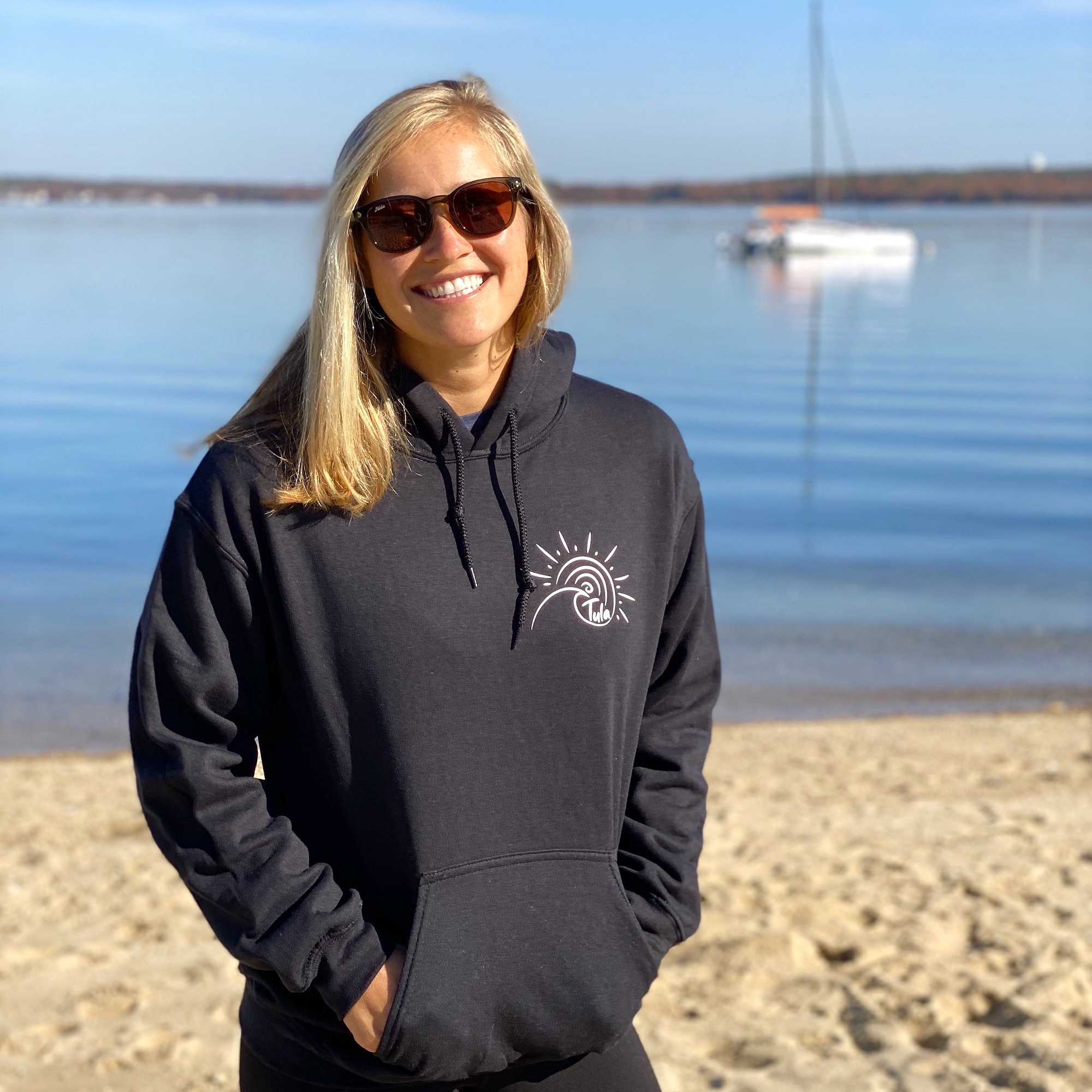
Tula Wave Hoodie
Stay warm this winter with this new Tula hoodie!
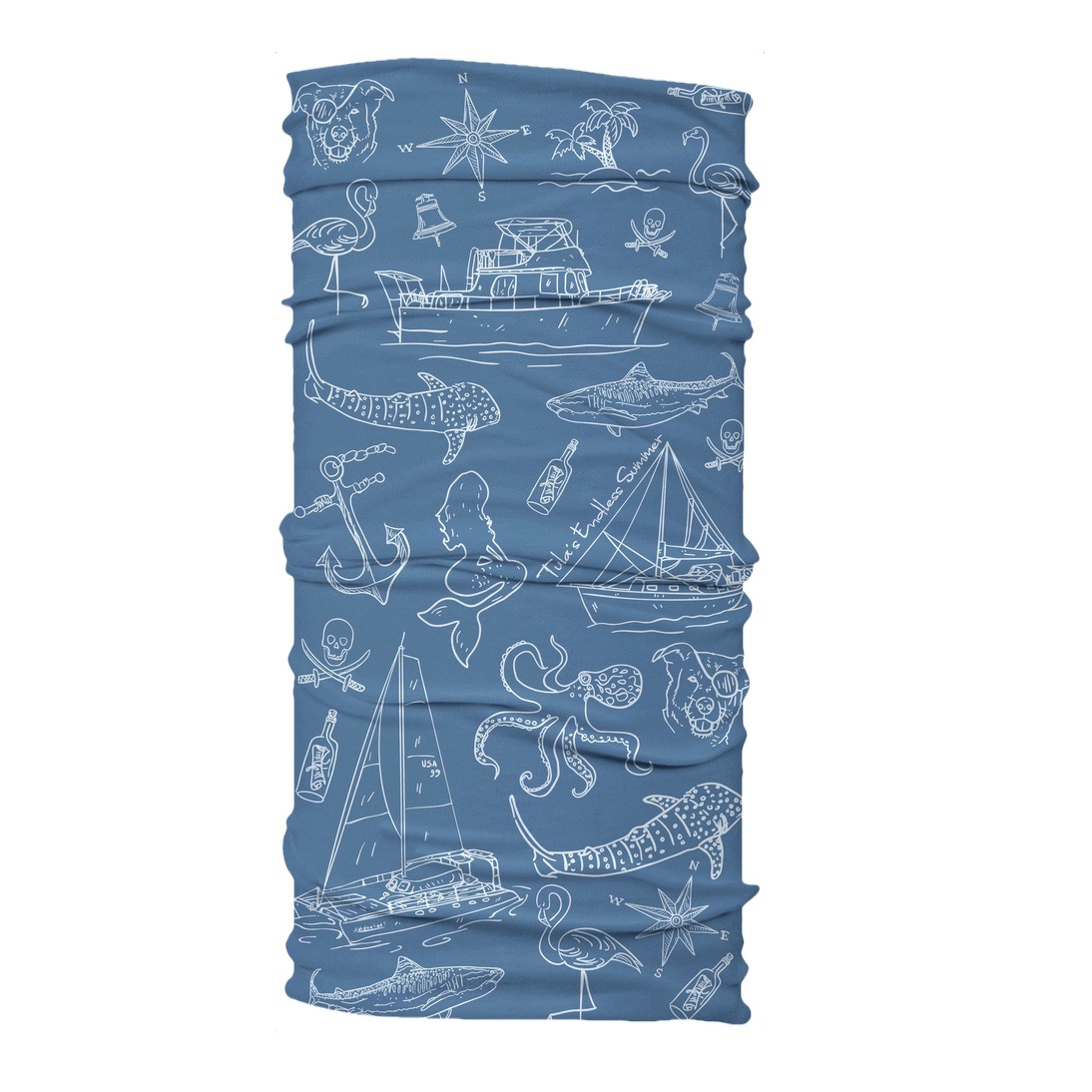
Tula Sunshield
The Tula sunshield can be used to protect your skin from the sun, keep your hair out of your eyes, and even keep your dog cool!
Meet The Dream Team

Captain Bill
He only responds to Bill when there is the word CAPTAIN in front of it. Jack of all trades and captain of all ships, Billy has a need for speed and a love for waves.
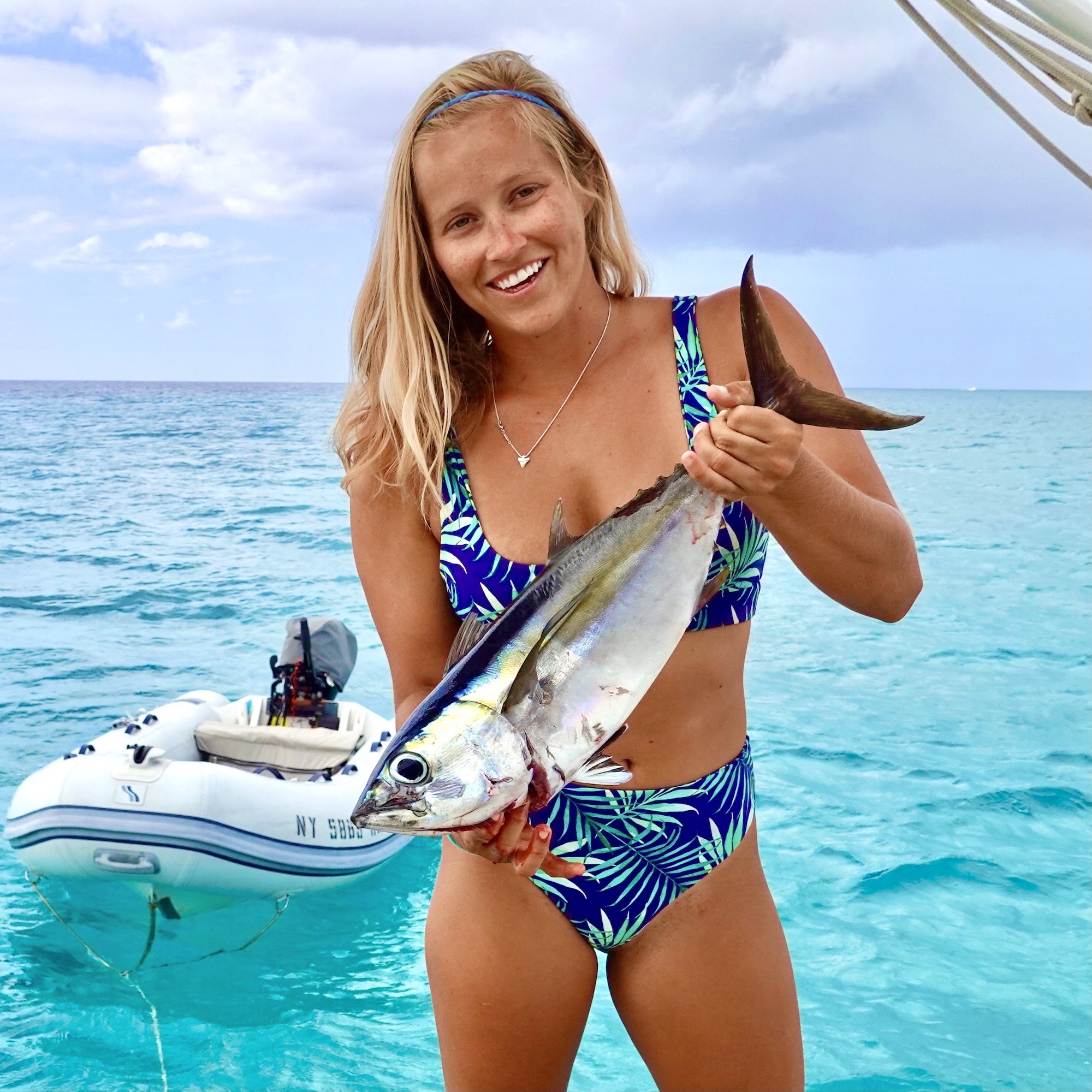
Just a girl who wishes she could breathe underwater. You will either find her chasing sharks, hunting coconuts, or talking to Jetty.
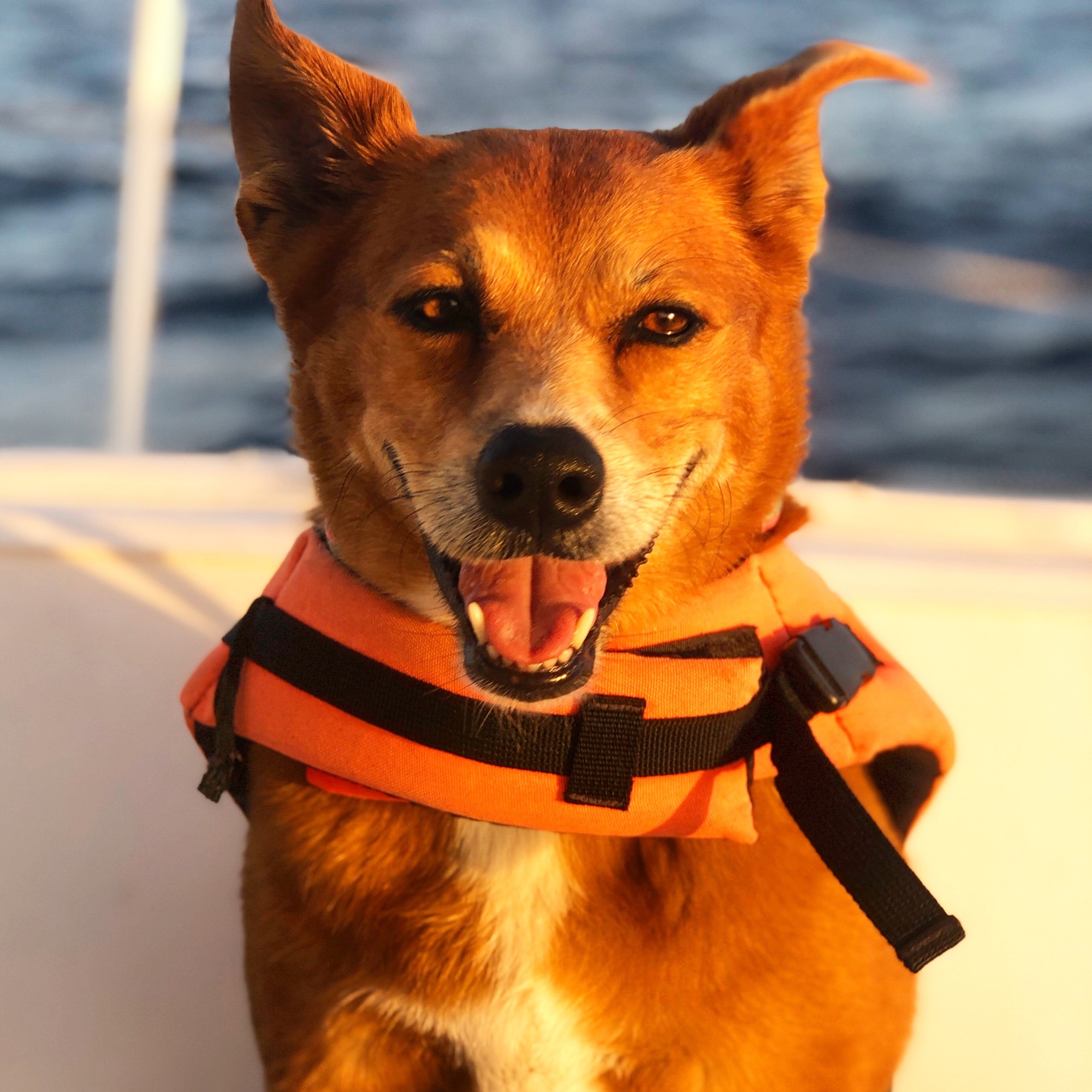
Jetty the Gypsy
A ginger with the goal to visit every beach on earth. She has seen and done more things than most people. Her favorite boat job is doing the dishes.
Popular posts
- Florida Anchoring Laws
- DIY TRUCK CAMPER REMODEL
- Bringing a Dog to the Bahamas- What is required? UPDATED December 2023
Login to Sailing Tellus
Signup to sailing tellus.
By registering an account on Sailing Tellus allows you to import your YouTube channel videos.
If you do not have a Youtube account you can still create an account to enjoy other features.
You have successfully signup on Sailing Tellus.
We have sent you an email with instructions on how to verify your email address.
The email should arrive in a couple of minutes.
If you don't see an email in the Inbox, please check the Spam folder, too.
Forgot password
We have sent you an email with instructions on how to reset your account password.

Tula's Endless Summer
Website stats, youtube stats, tula's endless summer on the map, 52 articles by tula's endless summer.


RVZONE Boat Navigation Lights, Boat Red and Green Bow Lights... › Customer reviews
Customer reviews.

RVZONE Boat Navigation Lights, Boat Red and Green Bow Lights Navigation Lights for Boats Led Deck Lights for Night Fishing, Yacht, Kayak, Bass Boat, Pontoon Boat
Customer Reviews, including Product Star Ratings help customers to learn more about the product and decide whether it is the right product for them.
To calculate the overall star rating and percentage breakdown by star, we don’t use a simple average. Instead, our system considers things like how recent a review is and if the reviewer bought the item on Amazon. It also analyzed reviews to verify trustworthiness.
Top positive review
Top critical review
There was a problem filtering reviews right now. Please try again later.
From the united states, there was a problem loading comments right now. please try again later..
- ← Previous page
- Next page →
Questions? Get fast answers from reviewers
- Amazon Newsletter
- About Amazon
- Accessibility
- Sustainability
- Press Center
- Investor Relations
- Amazon Devices
- Amazon Science
- Start Selling with Amazon
- Sell apps on Amazon
- Supply to Amazon
- Protect & Build Your Brand
- Become an Affiliate
- Become a Delivery Driver
- Start a Package Delivery Business
- Advertise Your Products
- Self-Publish with Us
- Host an Amazon Hub
- › See More Ways to Make Money
- Amazon Visa
- Amazon Store Card
- Amazon Secured Card
- Amazon Business Card
- Shop with Points
- Credit Card Marketplace
- Reload Your Balance
- Amazon Currency Converter
- Your Account
- Your Orders
- Shipping Rates & Policies
- Amazon Prime
- Returns & Replacements
- Manage Your Content and Devices
- Recalls and Product Safety Alerts
- Conditions of Use
- Privacy Notice
- Your Ads Privacy Choices

IMAGES
COMMENTS
June 15, 2022 Navigation lights on a sailboat can be confusing. If you understand the reason behind why they are the way they are however, they can make a lot more sense. At their heart, sailboats are really just a power boat and as such must adhere to all power boat rules such as navigation lights.
Sailboats below sixty-five feet may show a tricolor light at the masthead instead of side and stern lights when sailing. That's it, in a nutshell. There's a little more to it, as the rules change with different sizes and there are some specifics about angles of display for the colors.
Navigation Lights for Sailing A sailing vessel of less than 7 meters in length shall, if practicable, exhibit regular navigation lights, but if not practical, she shall have ready at hand an electric torch or lantern showing a white light which shall be exhibited in sufficient time to prevent collision. Diving Lights
Boat Navigation Light Regulations. Several rules and specifications are related to the type, size, layout, arc, and distance of visibility of boat navigation lights used by all vessel types which are collectively known as the International Regulations for Preventing Collisions at Sea or COLREGs.The navigational lights used are known as 'COLREG lights and shapes.
Boat navigation lights, or "nav lights," are the colored marker lights visible on either side of the vessel and at the stern. These lights play essential roles in identifying the ship's length, direction, and purpose! The colored marker lights and where to find them go as follows: The boat's port side is marked with a red light.
Shop Sale home navigation light rules Navigation Light Rules This article discusses navigation light requirements and serves as a guide to navigation light selection. By Tom Burden, Last updated: 4/18/2023 Recreational boats operating at night are required to display navigation lights between sunset and sunrise.
Navigation lights are required whenever you are operating your vessel between sunset and sunrise, or during any other times when your visibility is restricted from elements such as fog or rain. The type of lights required depends on the length of your vessel as well as if it's a powered or non-powered vessel.
As you breathe a sigh of relief, you realize that understanding the importance of boat navigation lights is critical for safe and enjoyable boating experiences. This guide is all about the maritime navigational lights, which are indispensable in: Making sure all vessels are visible in low light conditions and periods of limited visibility.
Power boats less than 20 meters shall exhibit navigation lights as shown in Figure 1. (Note: 2 masthead lights are optional for vessels under 50 meters. Vessels over 50 meters will display two masthead lights.) Figure 2 Vessels of less than 12 meters in length, may show the lights in either Figure 1 or Figure 2.
January 20, 2023 Navigating the open waters can be a thrilling experience, but it is also a responsibility that requires preparation and knowledge. A crucial aspect of safe boating is the use of navigation lights, which are lights placed on boats to help other boats and vessels identify the boat's position, heading, and intent.
The COLREGS for boats from 12-20m. The primary rules for sailing navigation lights are contained in Rules 22, 23, 25 and 30 of the International Regulations for Preventing Collisions at Sea (COLREGS). The following is a simplification of the full rules to cover sailing vessels between 12-20m:
Powered boat navigation lights. If you are operating a boat with an engine (including sailboats with motors), between sunset and sunrise or under conditions of restricted visibility, you need navigation lights. Powered boats under 39.4 feet: One all-around white light, visible from all directions (360 degrees) from two nautical miles away.
navigation lights Navigation Lights 310 Items Sort By Category Brand Clearance Color Rating Material Type Voltage Warranty Wattage OFF ON Pickup Today at Raleigh change my store PERKO Replacement Lens Fits Perko Lights 265/939, One Lens with Gasket $19.99 Compare WEST MARINE Deck Mount LED Navigation Lights $59.99 Compare WEST MARINE
A masthead light (a white light at the front of the boat). The masthead light needs to be visible across 225 degrees and from at least two miles away. A pair of red and green side lights, each visible across 112.5 degrees and from a mile away. A stern light (a white light at the rear of the boat). The stern light needs to visible across 135 ...
This is our version of a very common type small boat bi-color navigation light. An LED navigation light fixture that is an easy replacement for many of the more expensive and... $26.95. Add to Cart. Quick view. sku: N3-112-RGNW. LED Navigation Lights Bow Mounted Bi-Color - Horizontal Mount. Bi-Color LED Navigation Light 10-30VDC Horizontal ...
Navigation Lights & Components 149 Listed Bestsellers Newest Highest Price Lowest Price Rating 15% off Sea-Dog LED All-Around Pontoon Navigation Light - 400026-1 $48.99 $41.64 1 9% off Aqua Signal Series 28 LED Deck Mount Navigation Light $35.24 $31.72 23% off Hella Marine NaviLED 360 All Round Navigation Folding Lamp $113.99 - $137.99
We would be more than happy to help you get the light best suited for your boat and boating activities. We're here for you Monday through Friday from 9:00 AM until 6:00 PM EST at (877) 388-2628. Wholesale is your source for quality boat navigation lights. Order marine navigation lights including stern, bow, and side lights.
Rules of the road require specific navigation lights for boats, preventing collisions and keeping you seen in all conditions. Dive into our comprehensive selection and find the perfect fit for your vessel. We offer a vast array of options, from industry leaders like Perko and Lopolight, to suit every budget and boating style.
AMZONLY LED boat navigation lights are a versatile and top-rated kit with red and green LEDs for the bow and port side and white for the stern. They have three flashing modes and a magnetized screwdriver for easy battery changes. This IPX5 weather-resistant light kit comes with four LEDs, 12 3-volt batteries, three elastic straps, one long ...
He brought her back to life and sailed her down to Florida to escape the cold of the northeast. Tula's engine broke down in Jupiter and that is where our story began together. The word Tula means balance in Sanskrit. We kept the name on our channel because she was where the endless summer started. Staying balanced is important on the water ...
We make videos to show you what boat life is all about! Follow along to see the work that it takes and the amazing rewards of living on the water! Click Here. Join Our Crew. Joining us on Patreon means you pledge to support our videos. That pledge can be $1, $5, or whatever you feel the videos are worth to you. In return, you get early released ...
Tula's Endless Summer. Billy, Sierra, and Jetty here and we live on a BOAT! We have sailed up and down the East coast of the U.S., all of the Bahamas, through the Caribbean, and the Pacific Northwest from California to Canada!. We started this boat life on a small monohull sailboat (Tula) and since 2014 we have also lived on a 34' Marina Trader ...
Find helpful customer reviews and review ratings for RVZONE Boat Navigation Lights, Boat Red and Green Bow Lights Navigation Lights for Boats Led Deck Lights for Night Fishing, Yacht, Kayak, Bass Boat, Pontoon Boat at Amazon.com. Read honest and unbiased product reviews from our users.
Billy, Sierra, and Jetty here and we live on a BOAT! We have sailed up and down the East coast of the U.S., all of the Bahamas, through the Caribbean, and the Pacific Northwest from California to ...